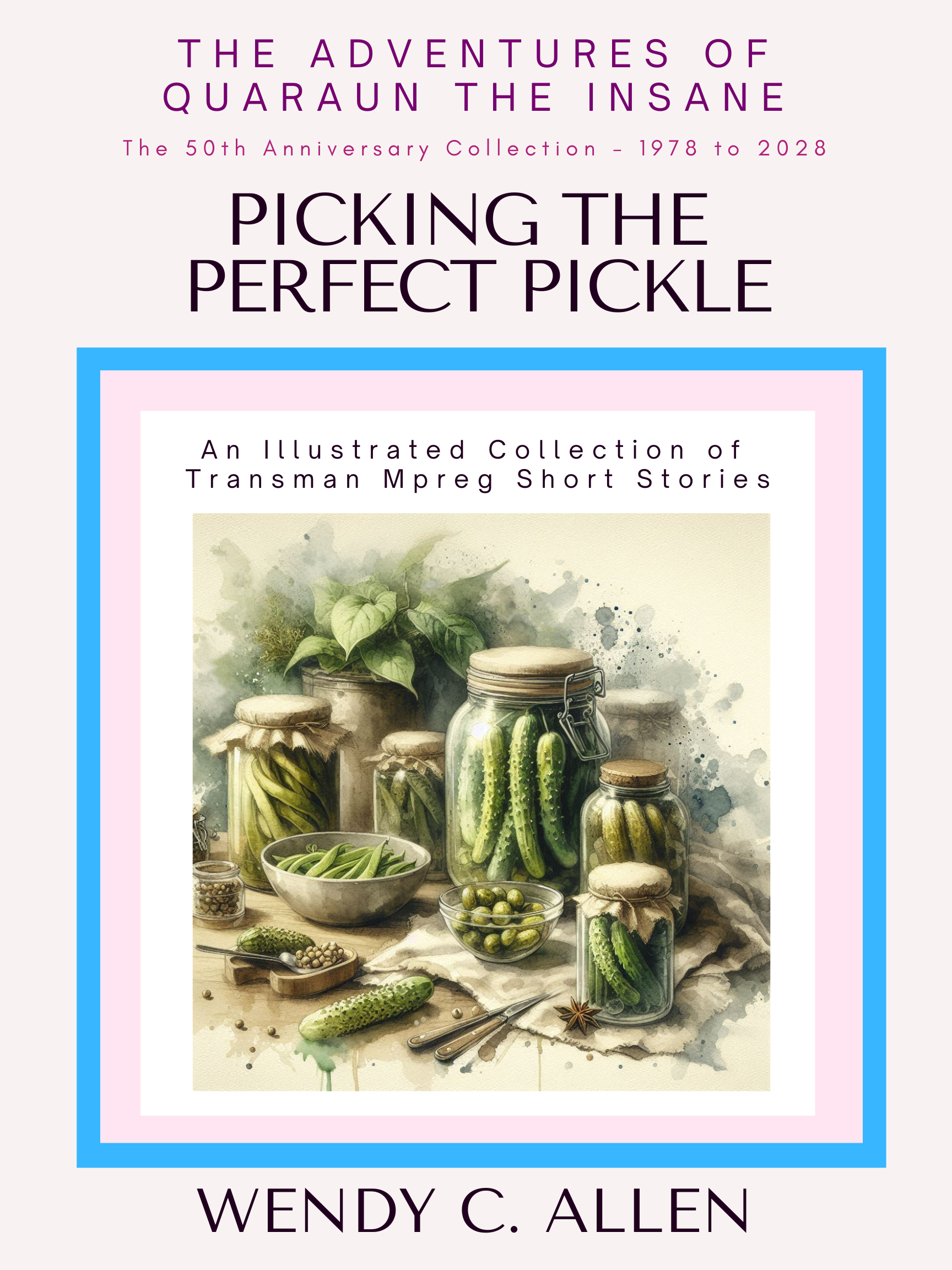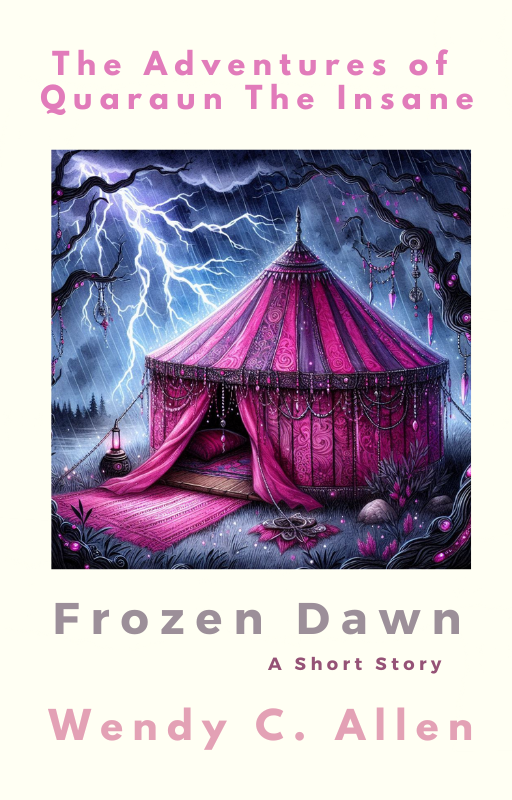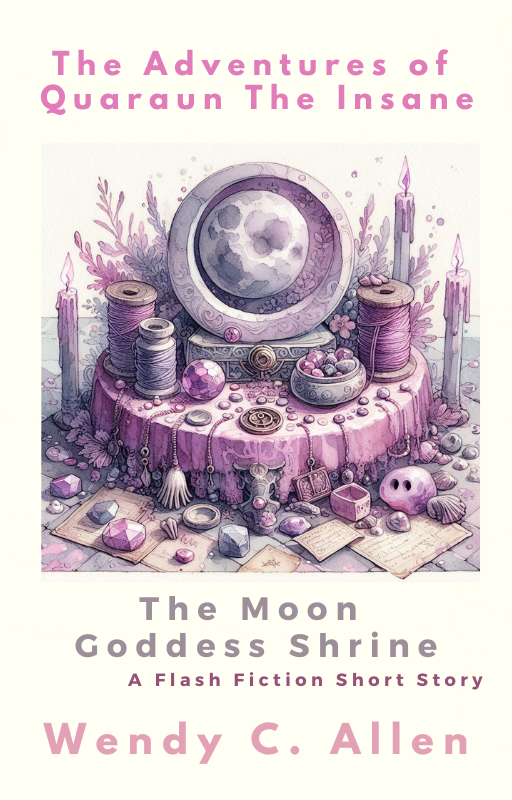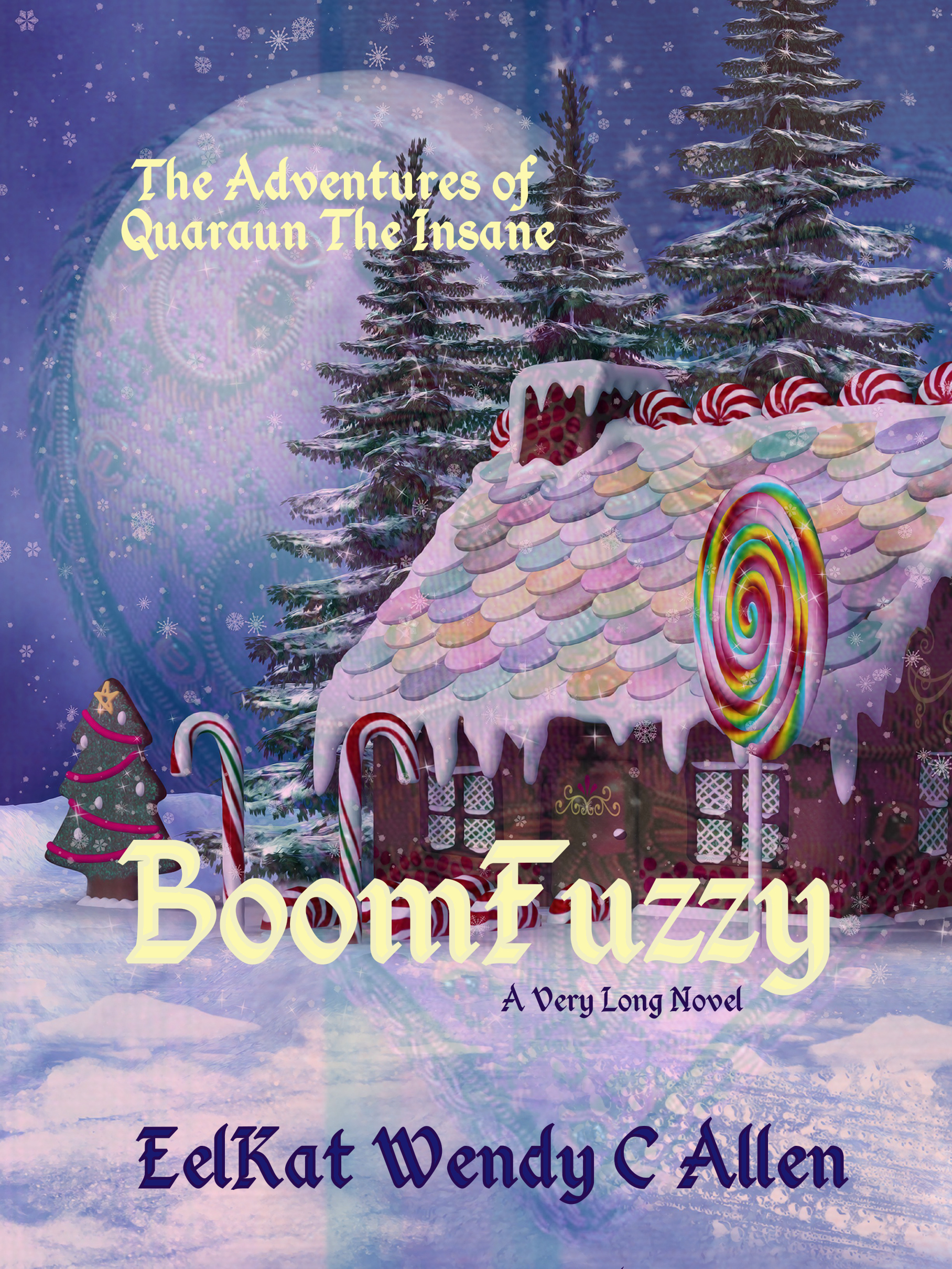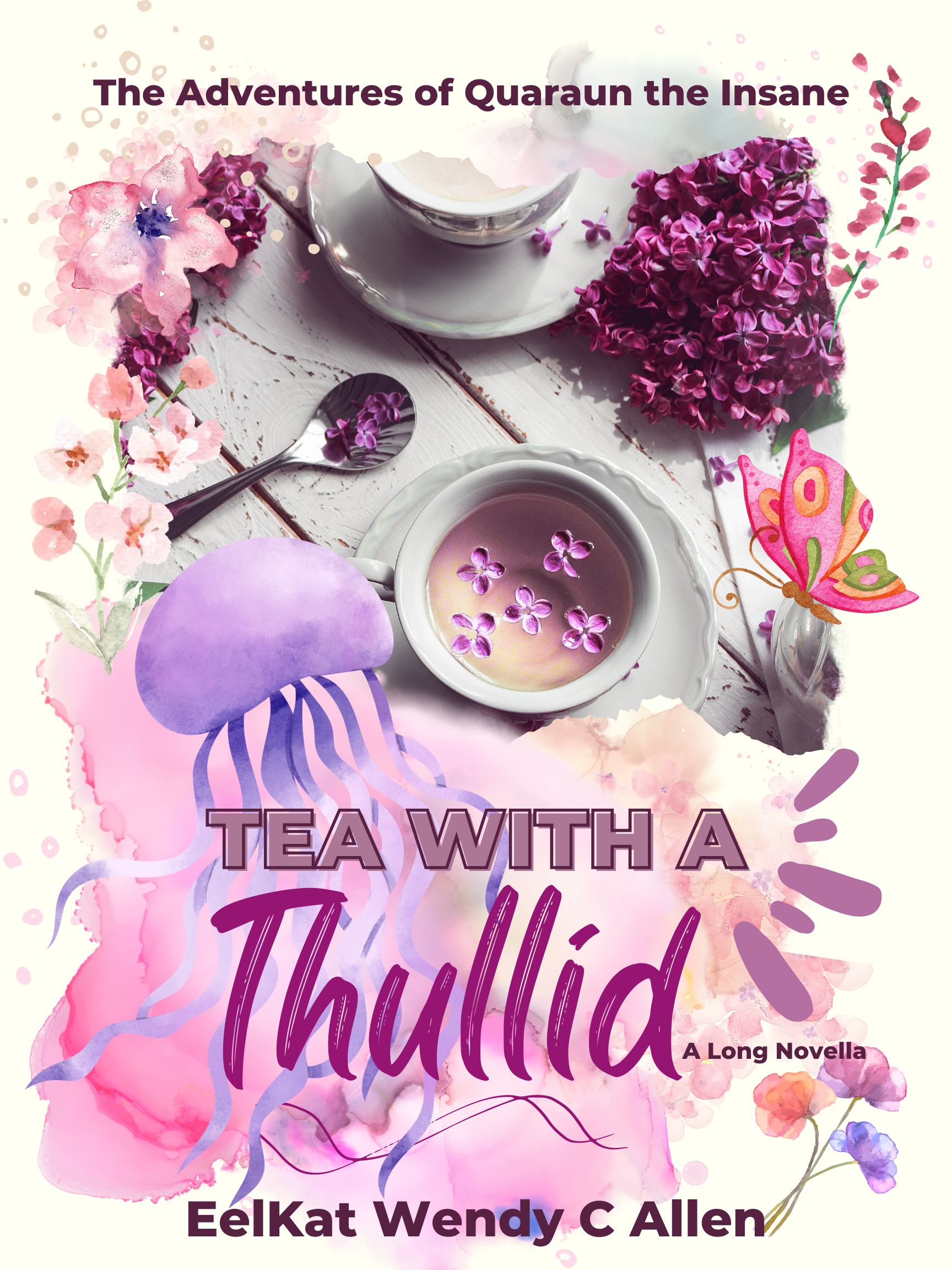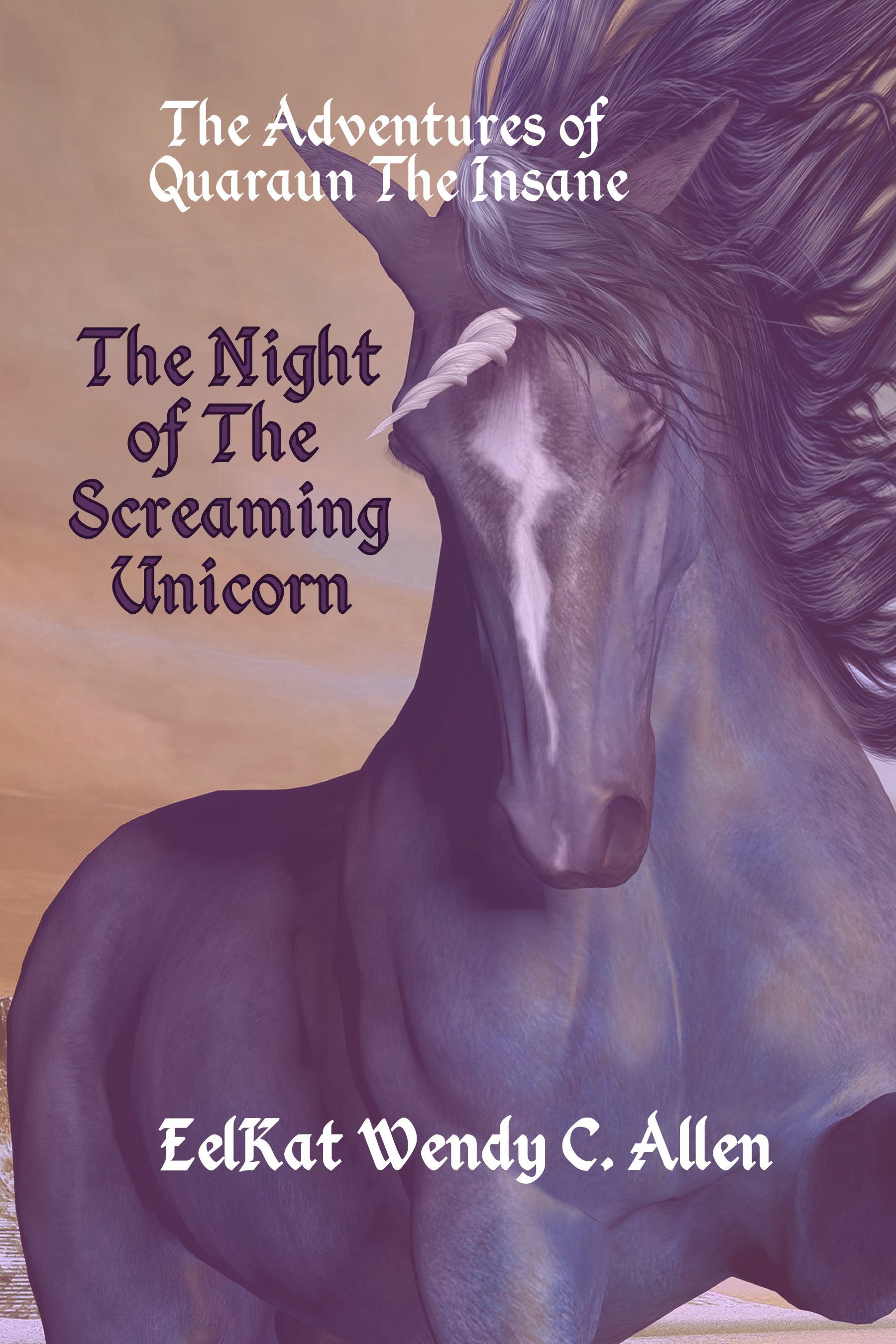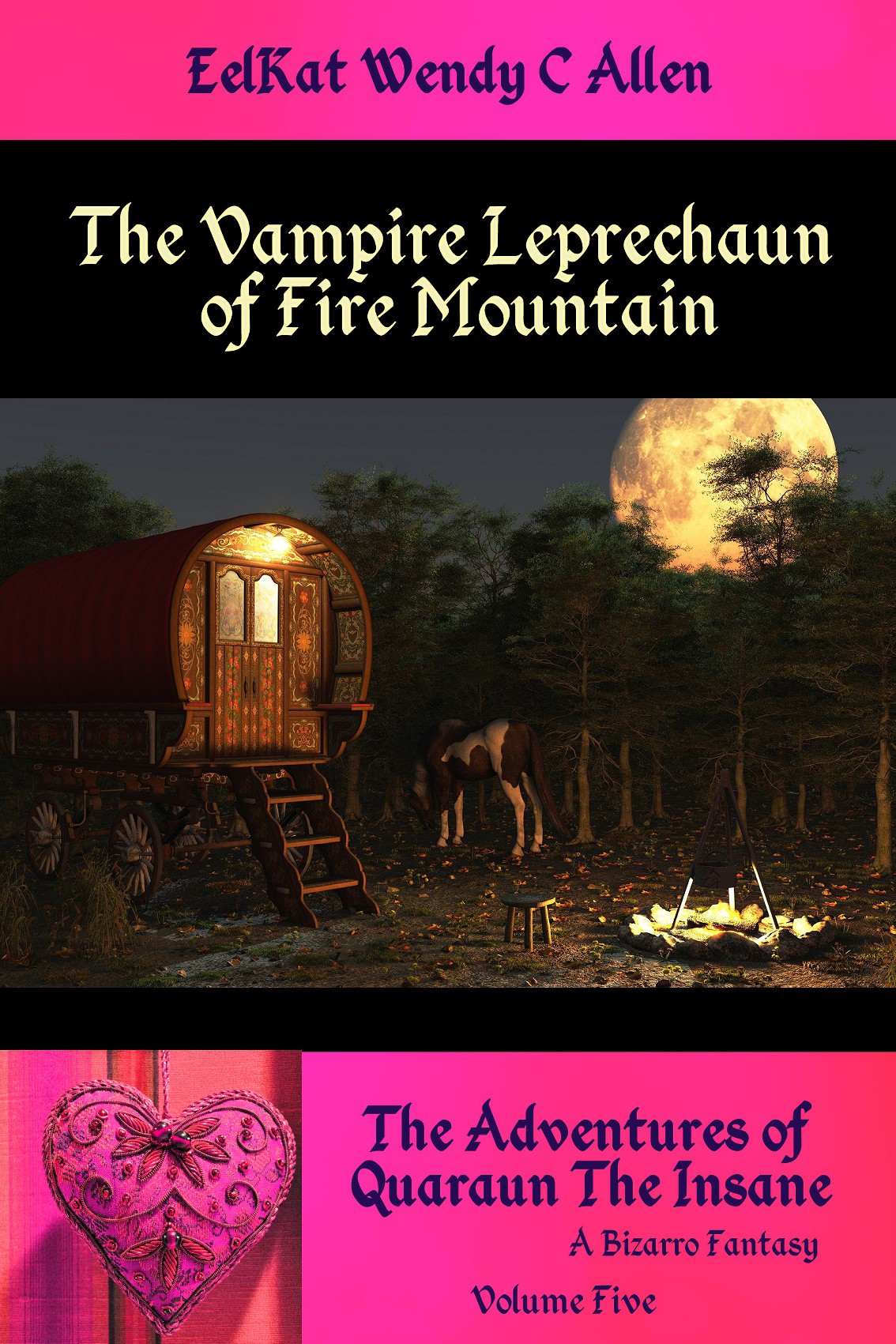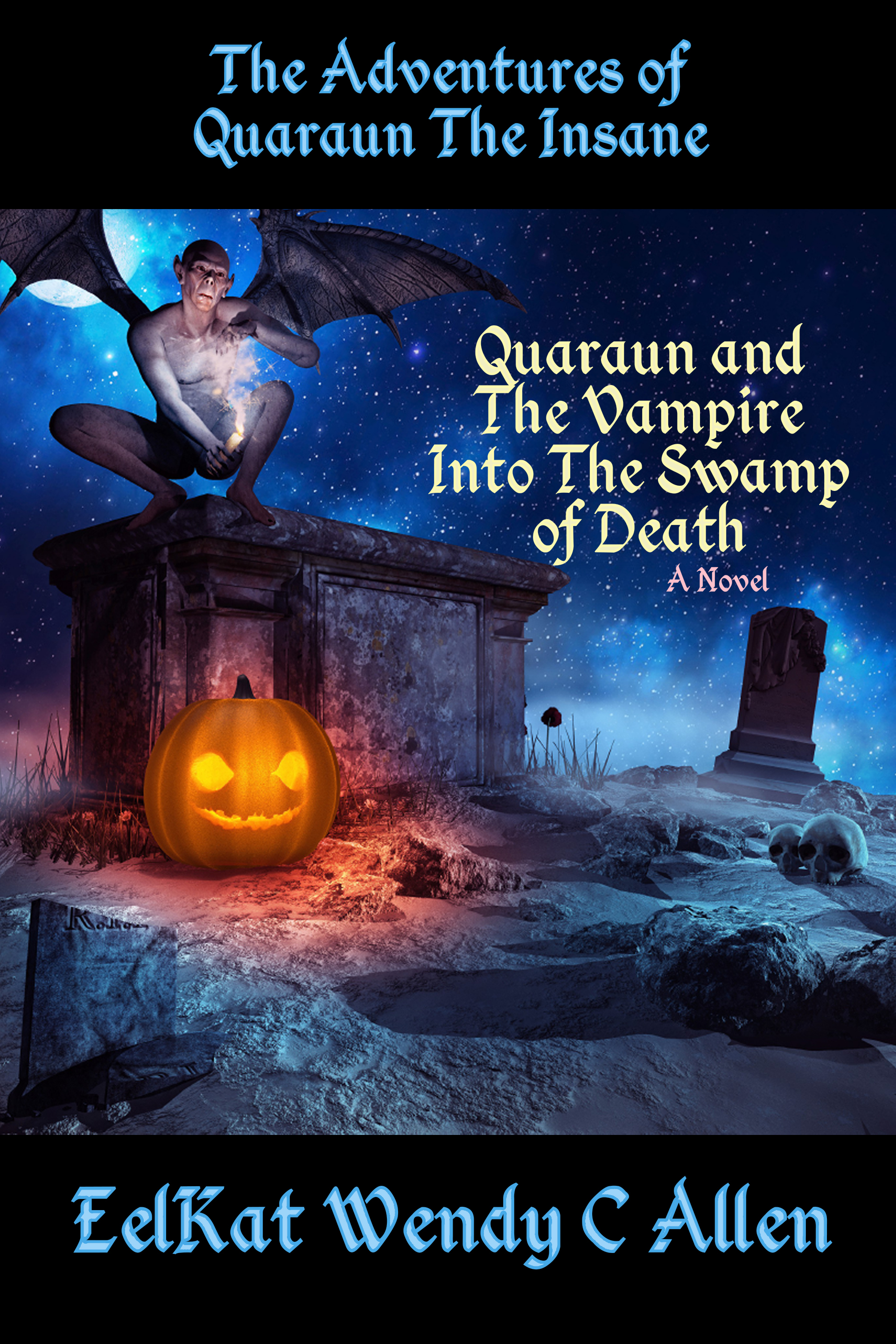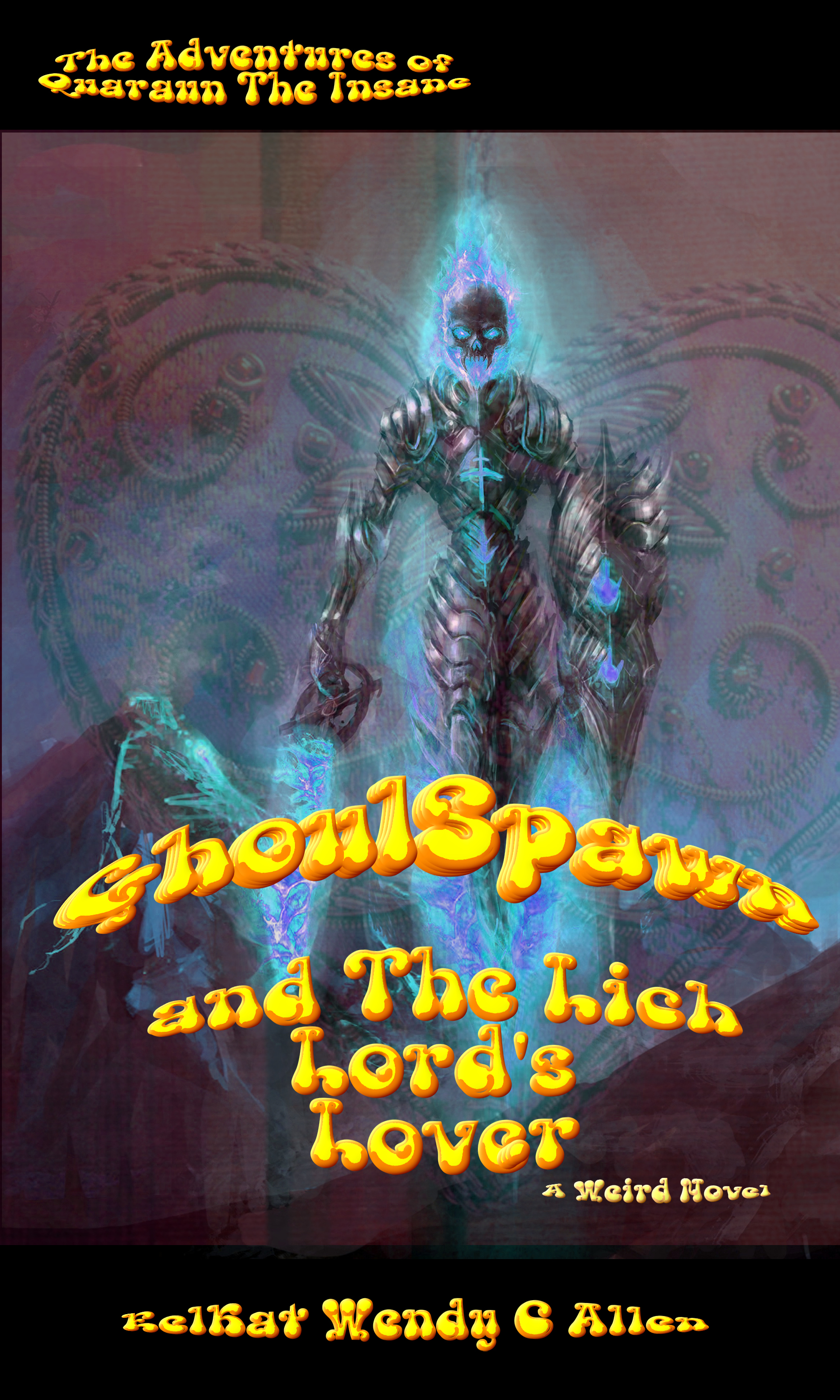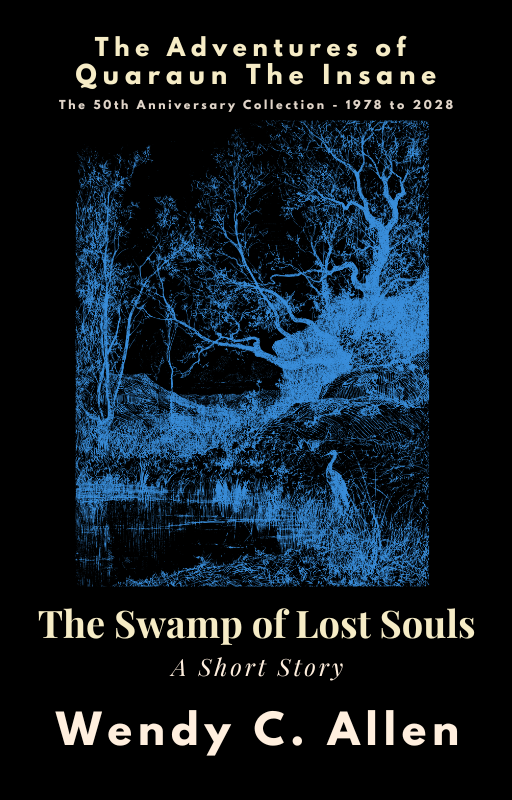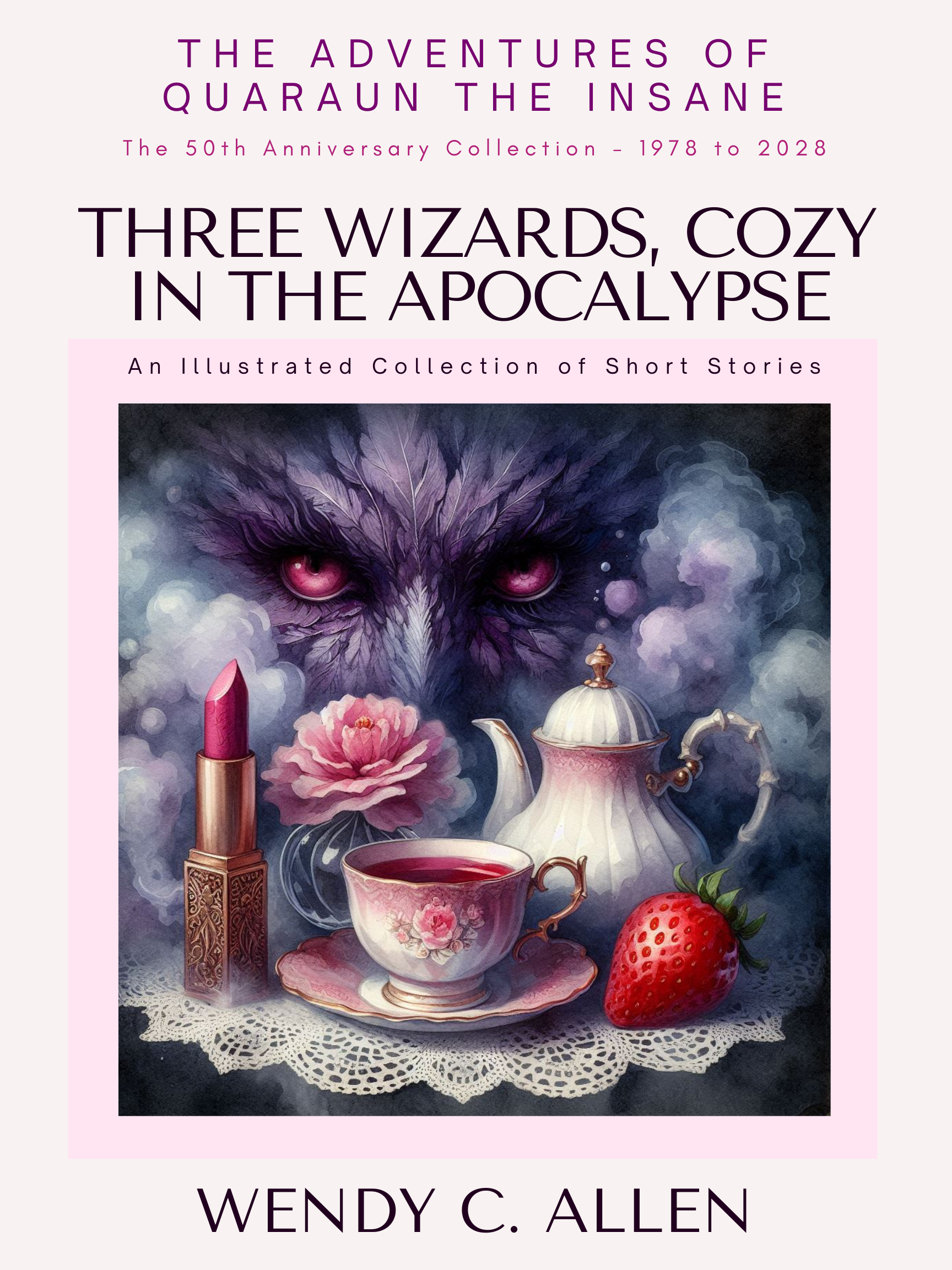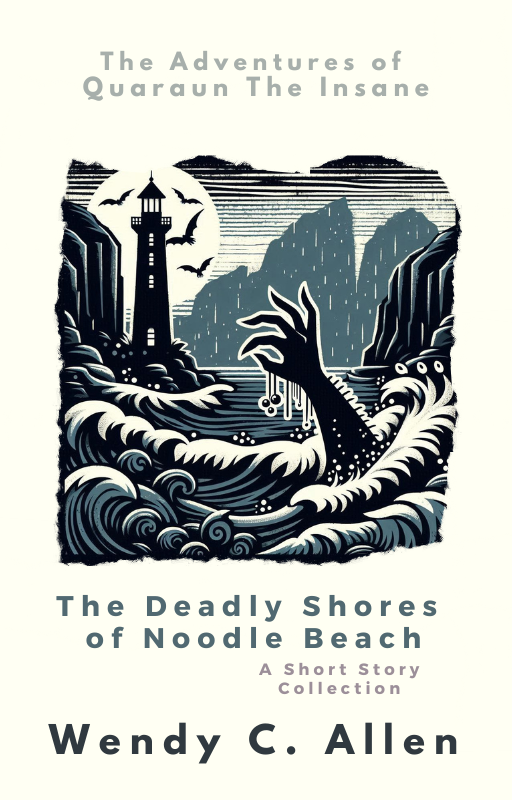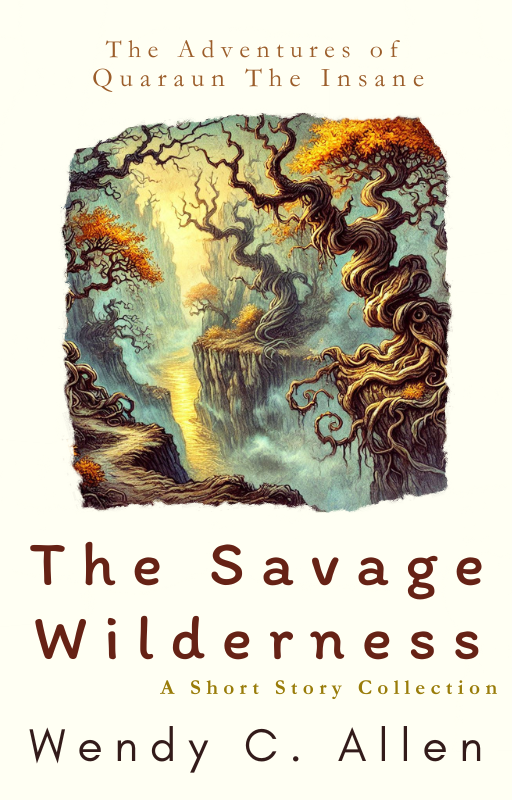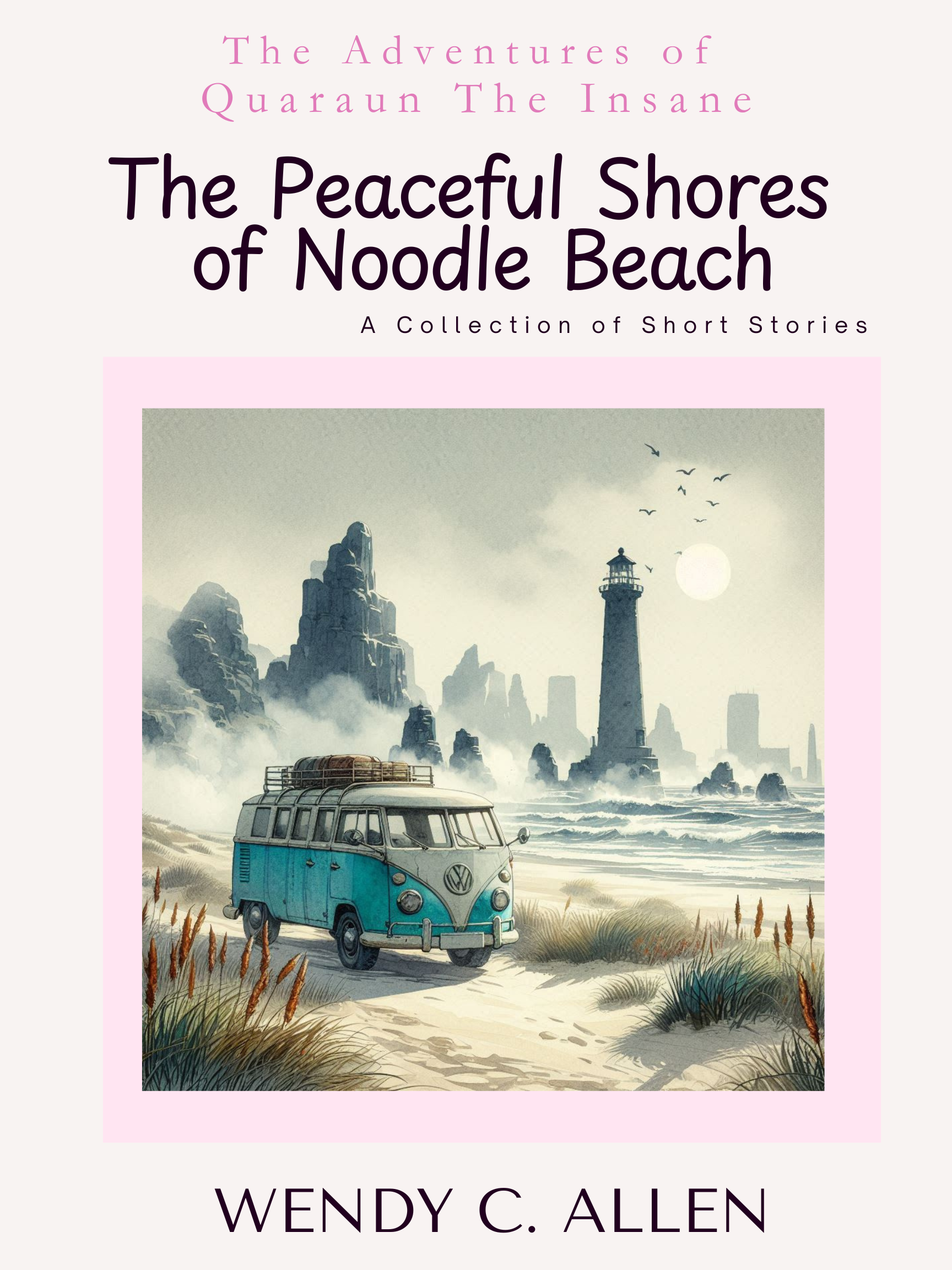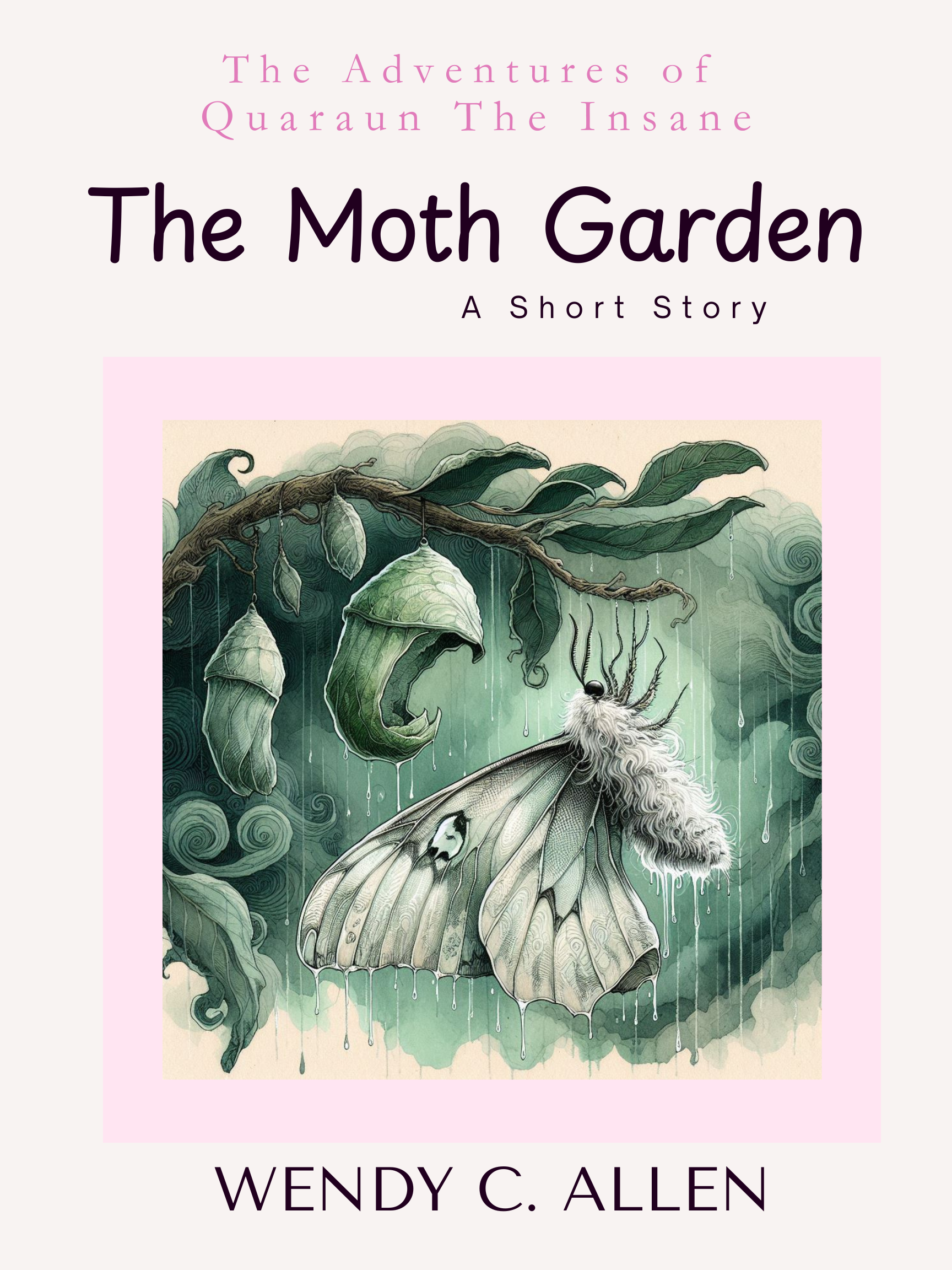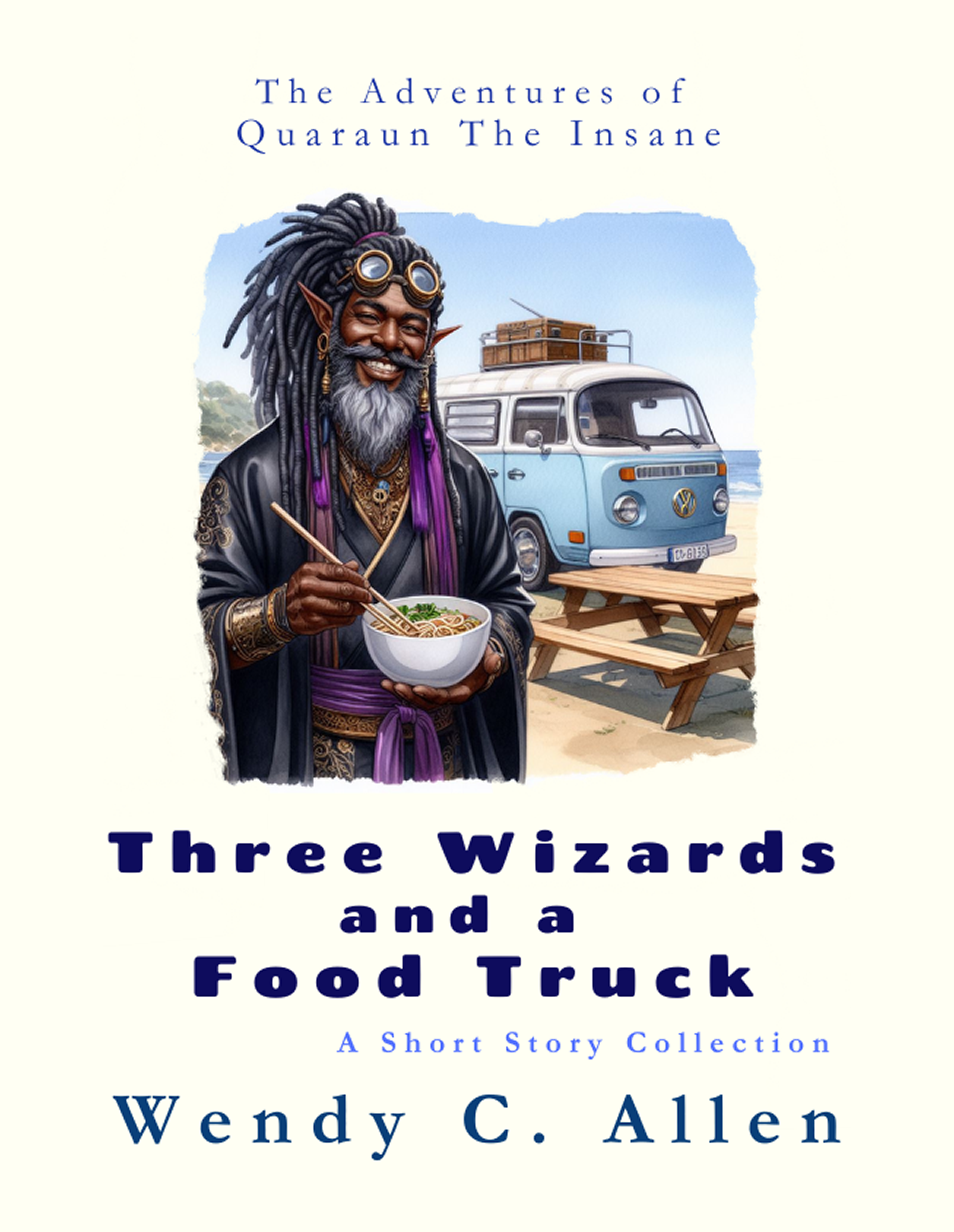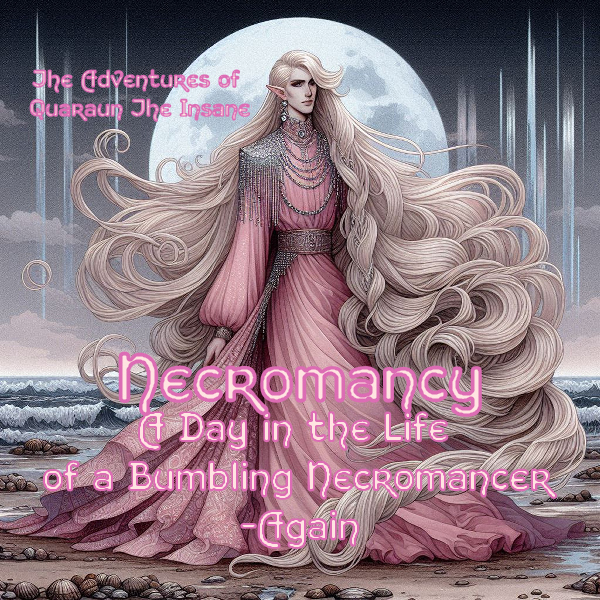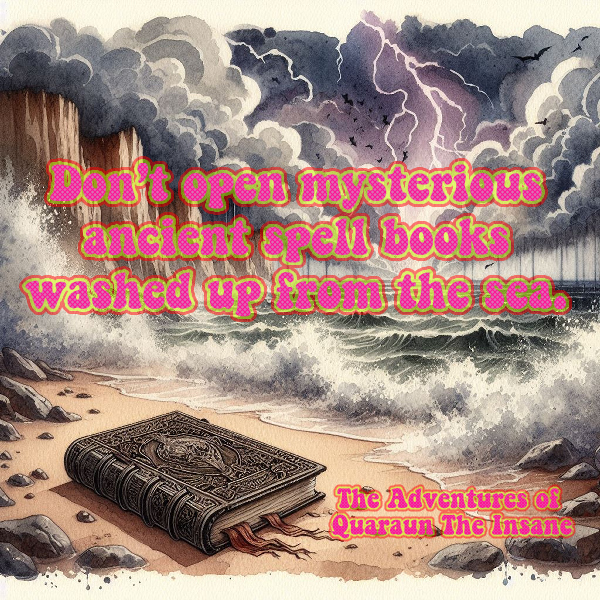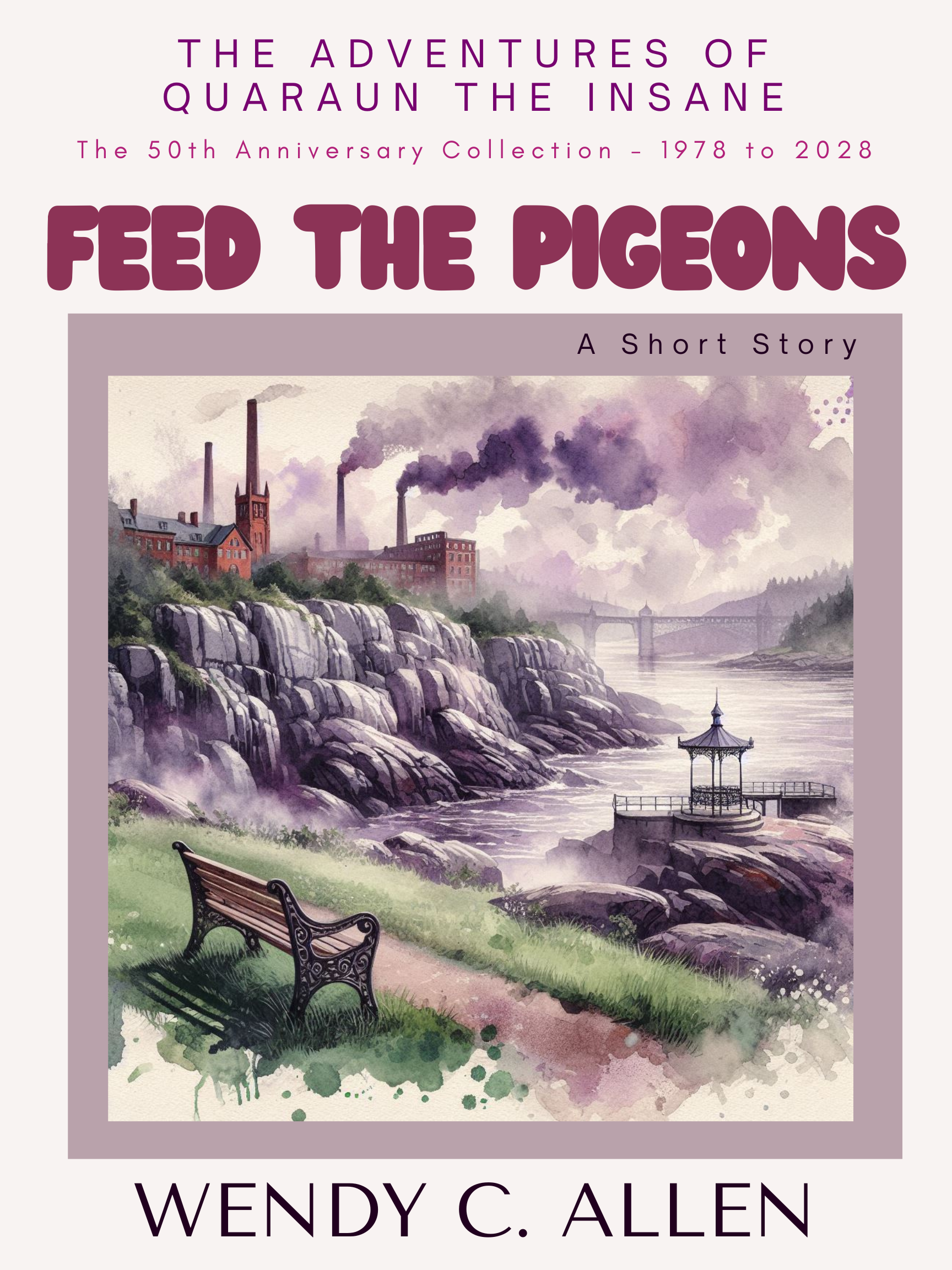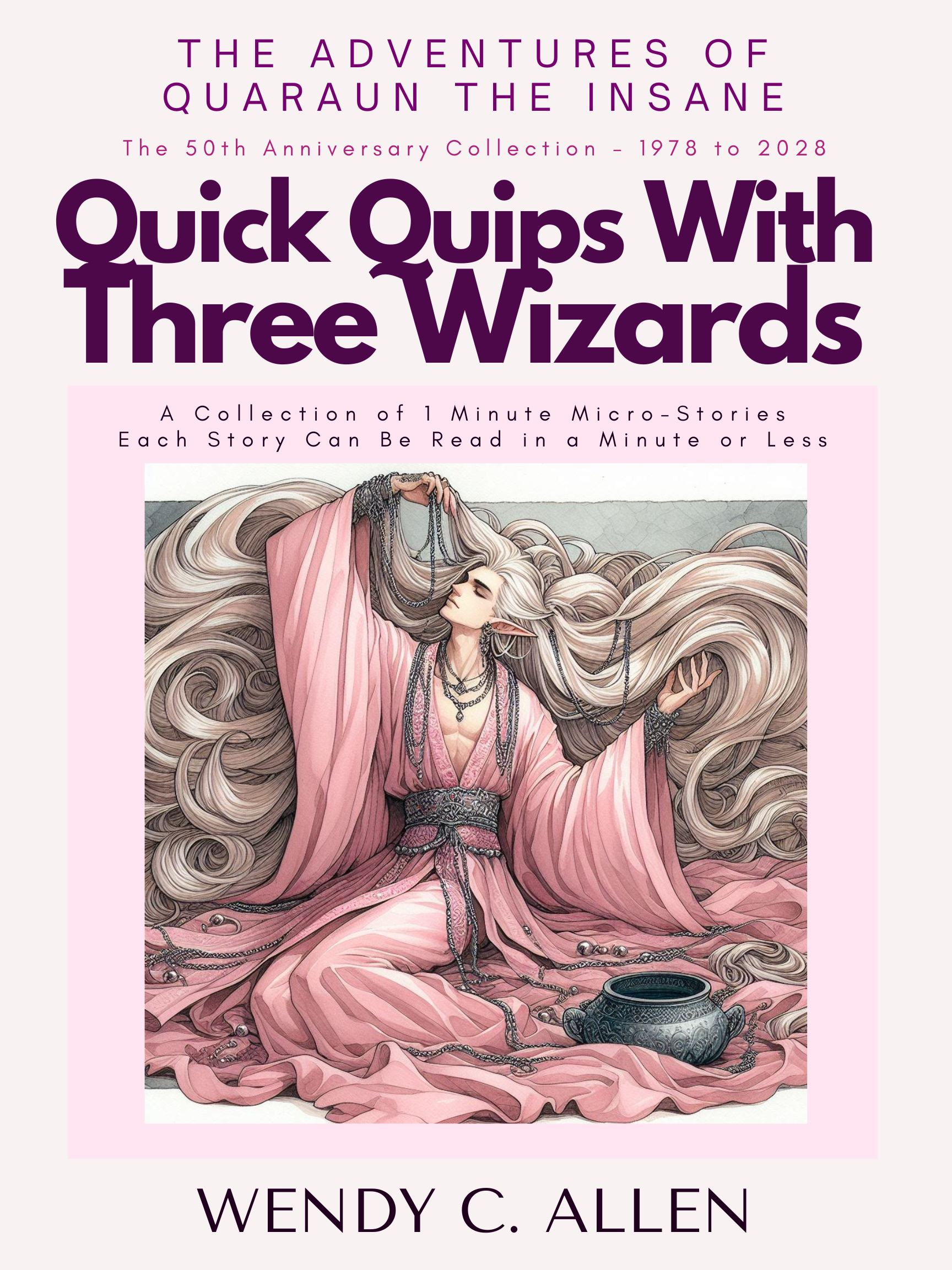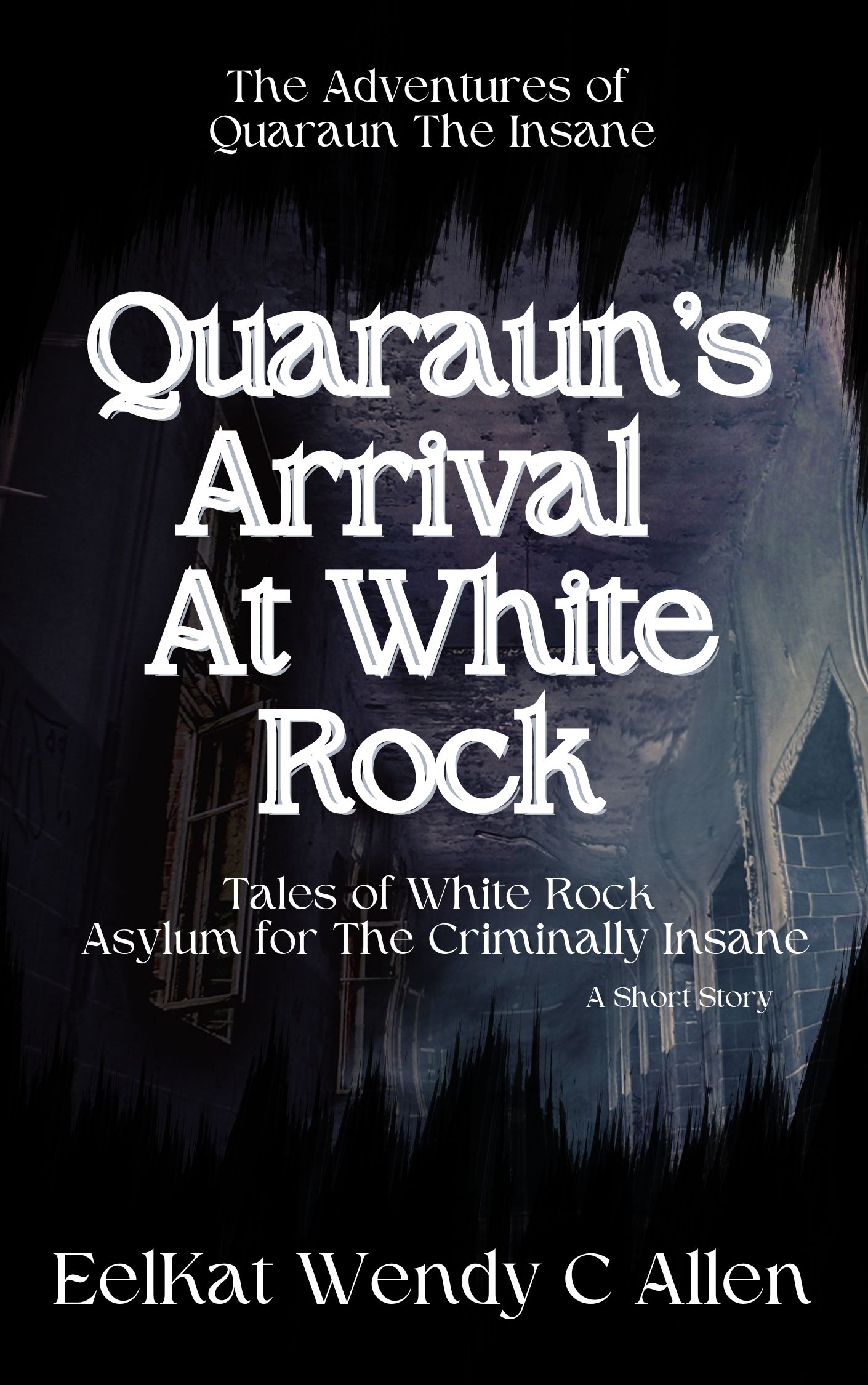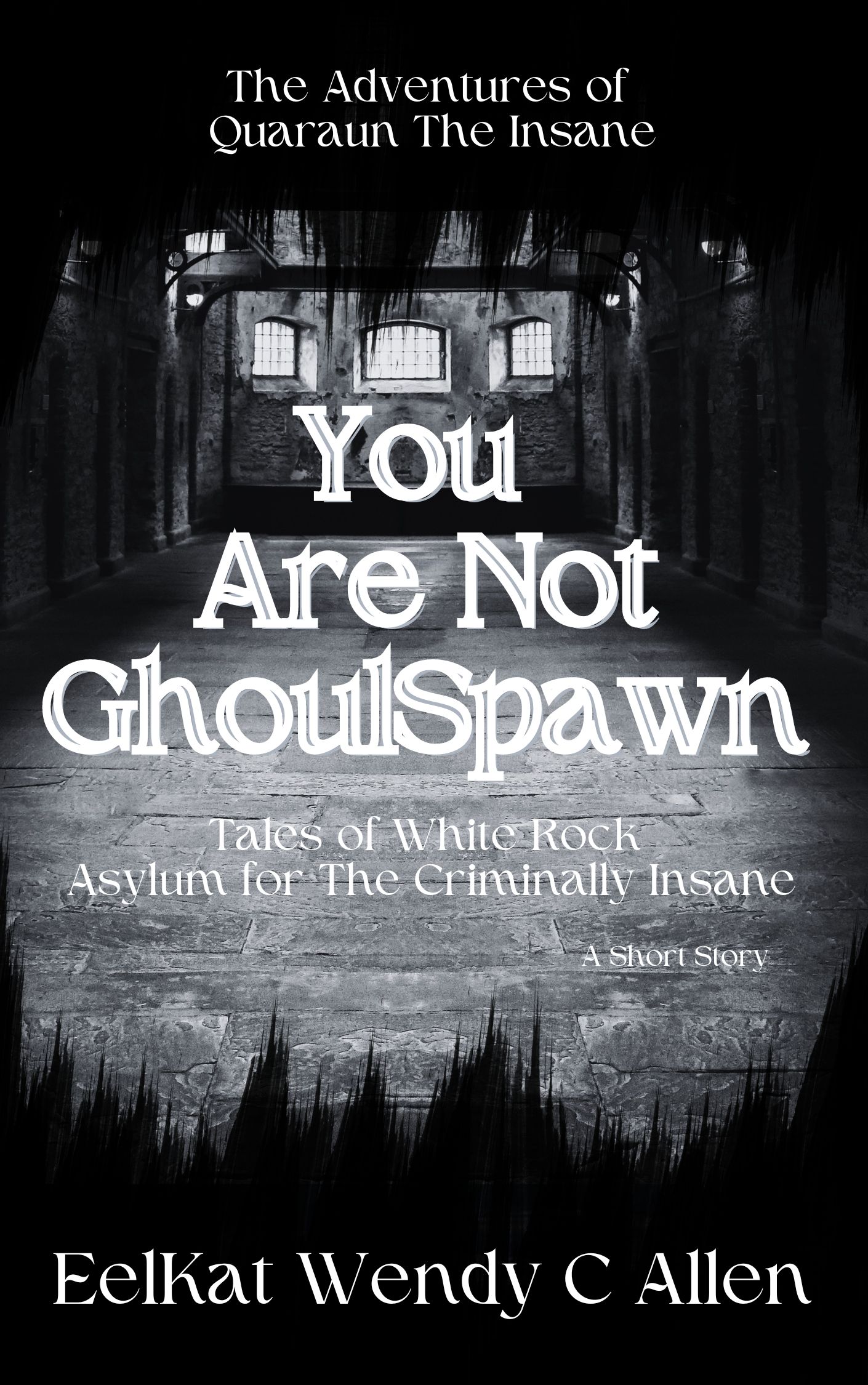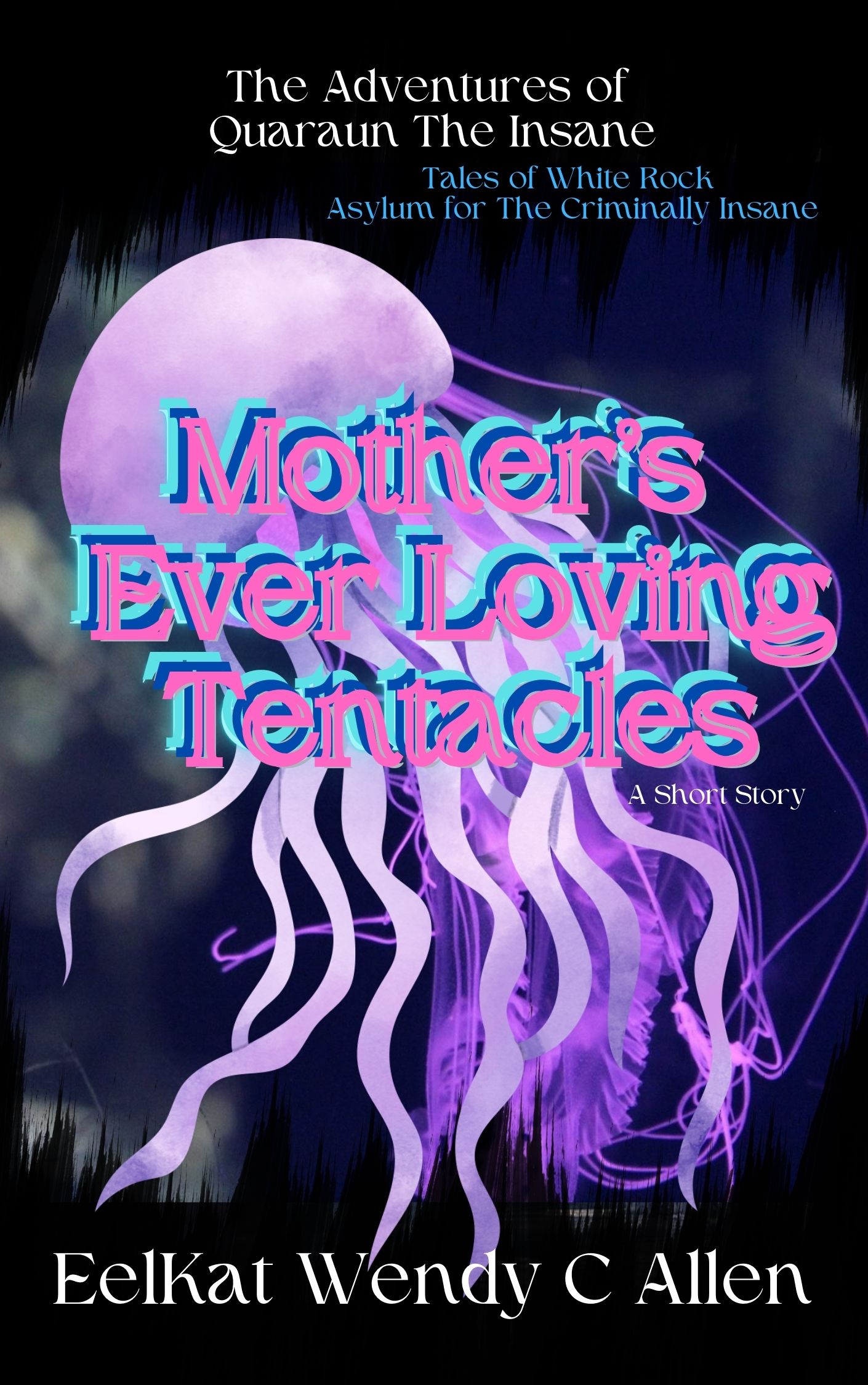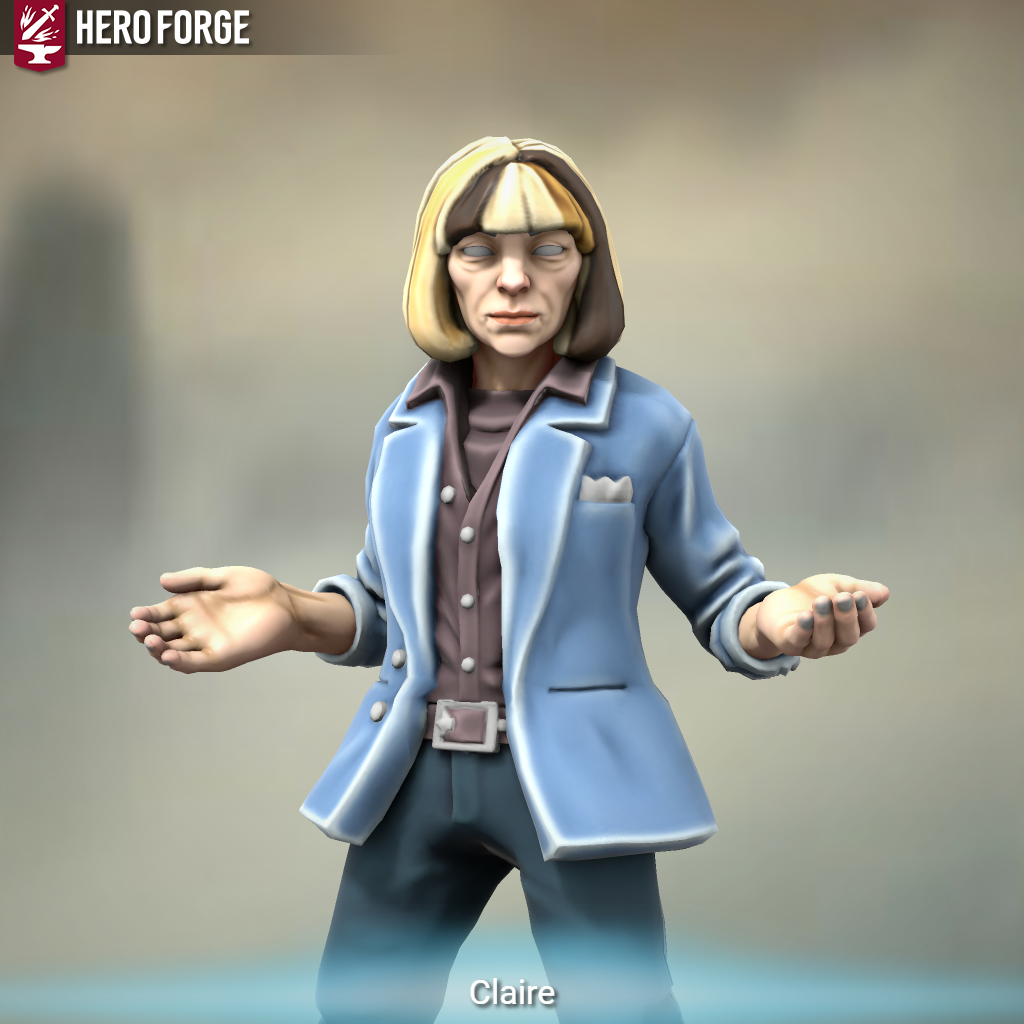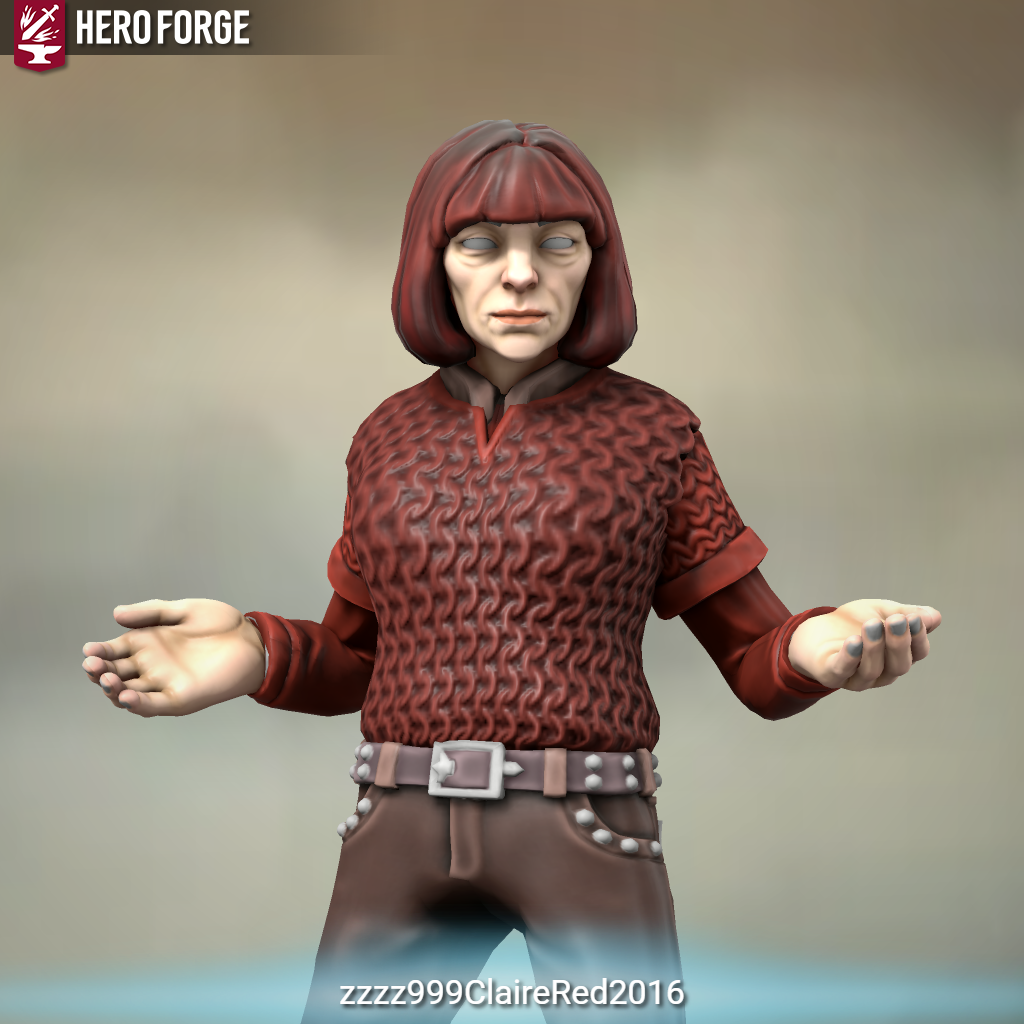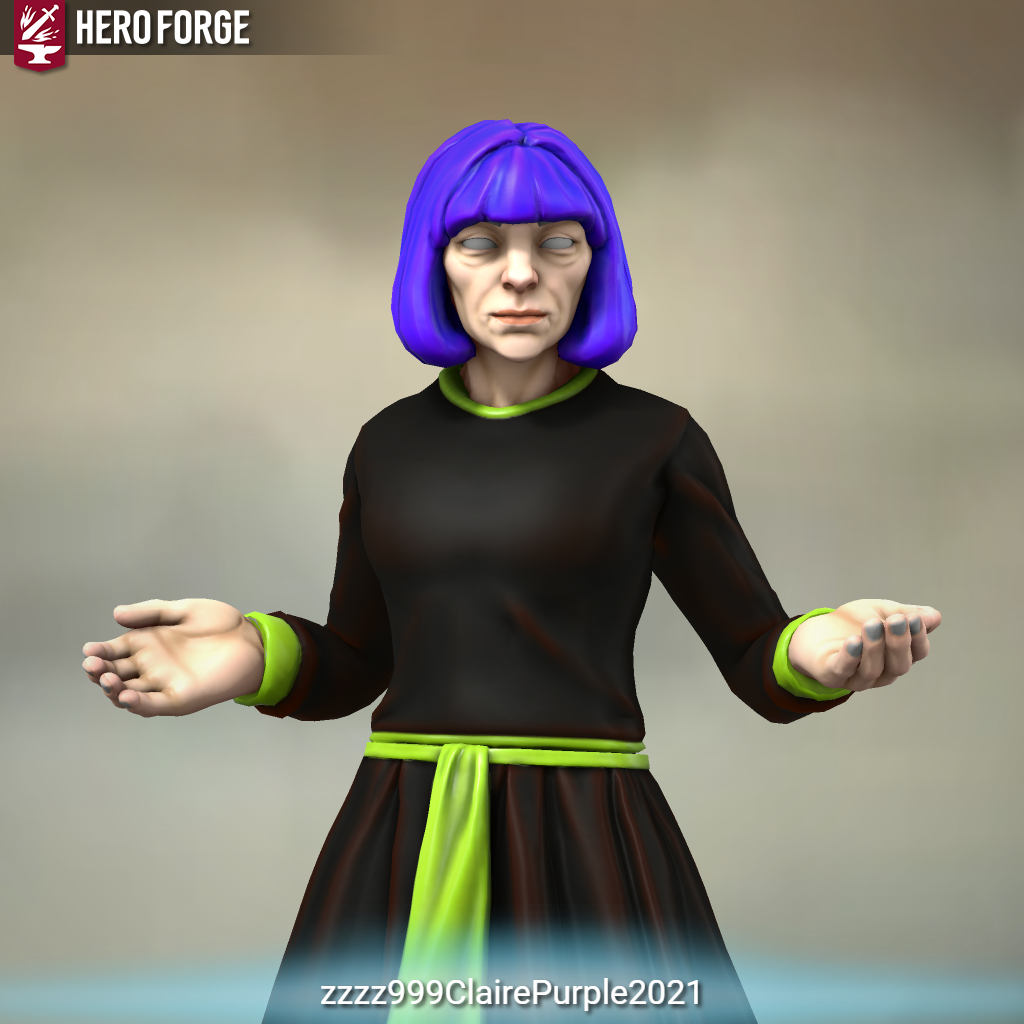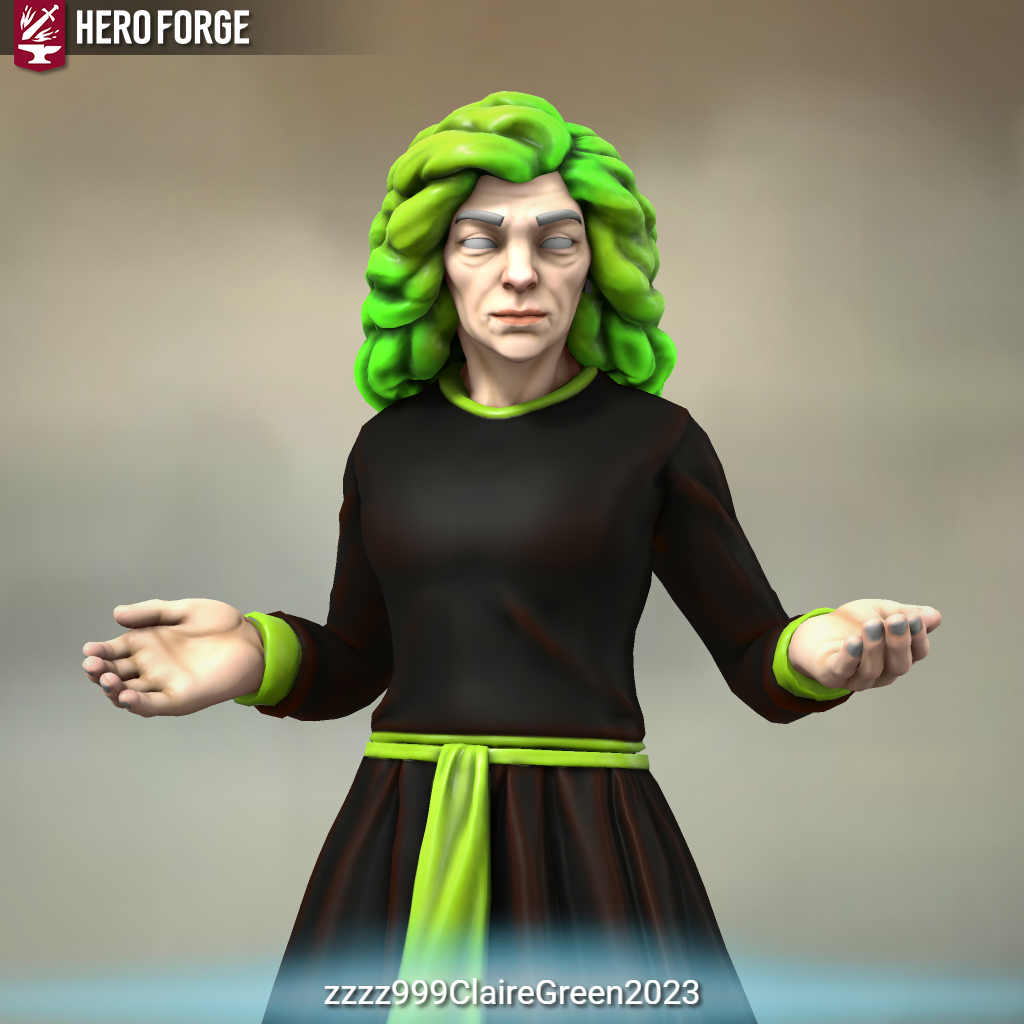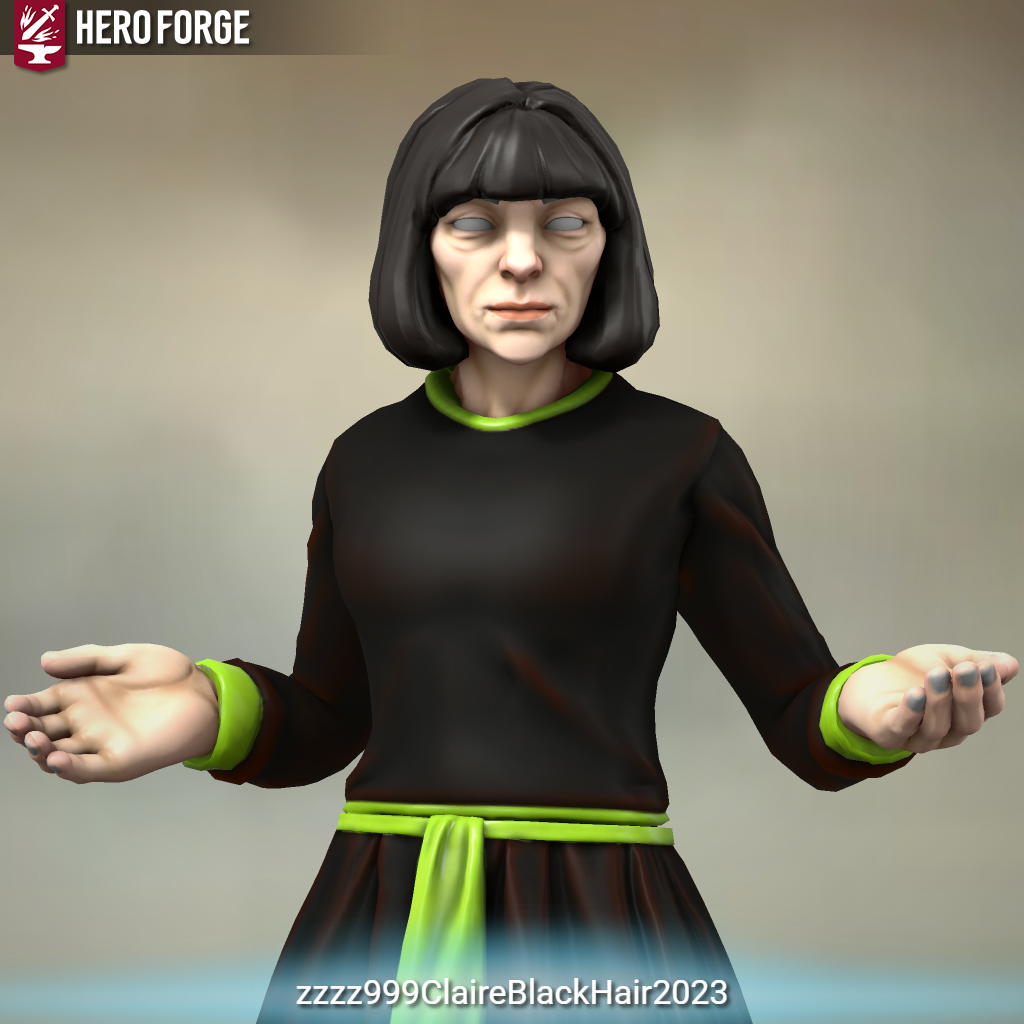Counting Down to the 2028 50th Anniversary of my first published book (September 23, 1978)
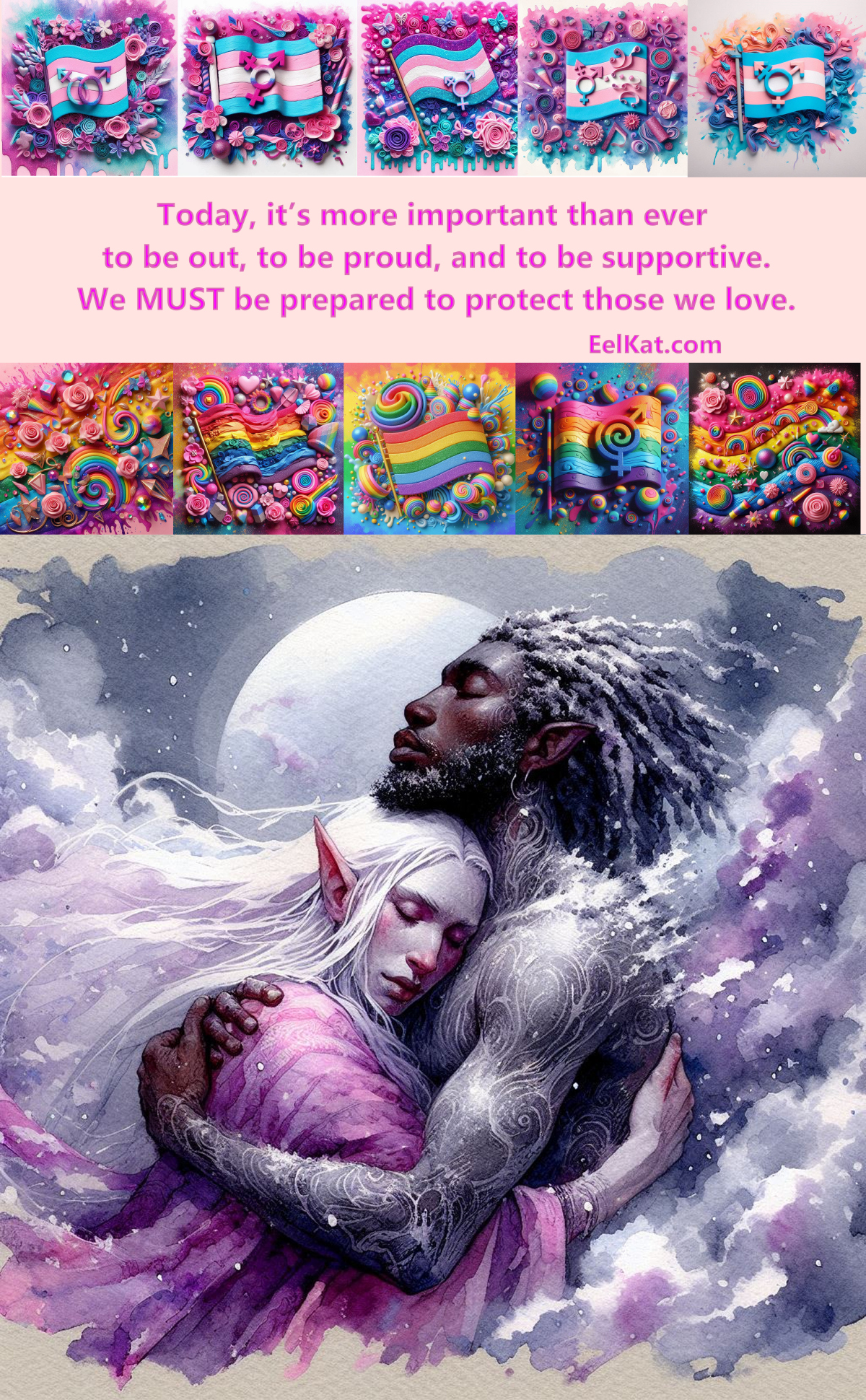 Transman Quaraun (The Pink Necromancer) and his husband King Gwallmaic (aka BoomFuzzy the Unicorn) King of The UnSeelie Court. Main characters of The Adventures of The Pink Necromancer series. Transman Quaraun (The Pink Necromancer) and his husband King Gwallmaic (aka BoomFuzzy the Unicorn) King of The UnSeelie Court. Main characters of The Adventures of The Pink Necromancer series.
This website is a safe zone for LGBTQAI+, pagans, polies, furries, and BIOPIC communities. |
Important:
Fraudulent sites are impersonating Wendy Christine Allen.
- The ONLY official website for Wendy Christine Allen is www.eelkat.com
Fraudulent social media accounts, particularly on Reddit and FaceBook are impersonating Wendy Christine Allen.
- The ONLY official social media accounts for Wendy Christine Allen are listed in the footer here at www.eelkat.com
Any websites and accounts you find online that are NOT on this list are NOT Wendy Christine Allen
Your World: Unique Wildlife | EelKat's Guide To Worldbuilding For Fantasy Authors - The Squidoo Series
Important:
Fraudulent sites are impersonating Wendy Christine Allen.
- The ONLY official website for Wendy Christine Allen is www.eelkat.com
Fraudulent social media accounts, particularly on Reddit and FaceBook are impersonating Wendy Christine Allen.
- The ONLY official social media accounts for Wendy Christine Allen are listed in the footer here at www.eelkat.com
Any websites and accounts you find online that are NOT on this list are NOT Wendy Christine Allen
While you are here, please take the time to read this:
Do you know who this woman is?
She might be the woman who murdered my son.
Your World: Unique Wildlife | EelKat's Guide To Worldbuilding For Fantasy Authors - The Squidoo Series
When creating fantasy wild life, remember not to go too far overboard in making them too different from things your readers can identify with.

Usually I use the same basic animals only different; say the horses are shades of blue and pink instead of tan and browns.
Cats with wings.
Small things are big: say slugs grew to 20 feet instead of 5 inches. Little stuff like that.
My reason for it is simple: readers can identify the animal, as being enough like something that they can see and touch, and therefore can paste an image of in their head, while at the same time being just different enough, so as to be fantasy, but not so different that the reader has trouble imagining it in their head.
For example, most people know what a Unicorn is, And also a Pegasus, and a few might know Phookas and Kelpies, maybe, but how many know the Each-Usty?
What do Unicorns, Pegasus, Phookas, Kelpies, and Each-Usty all have in common. All are evil tricker Faeries whom spend most of their days in the form of a horse...each is from a different culture: Irish, Welsh, Cornish, Scottish, Shetland, Roman, and Greek, but all are nearly identical creatures, and so each can be described as "mythical horses"... descriptions include: "winged horse", "one-horned pony", "water horse", "magical pony", etc.
I use this example of various Faerie Horses from various cultures, because it shows you how Unique Fantasy Creatures were created by other authors. In the case of Unicorns, Pegasus, Phookas, Kelpies, and Each-Usty, each author based the fictional animal off a real world animal: a horse. By using a real world animal to base your fictional animal on, you make it easier for your readers to envision the new creature.
You always want to make things easier for your reader.
Think about the last time YOU read a Fantasy novel that featured unfamiliar creatures the author had created. Most cases you'll remember that the author said things like: "snake like" or "similar to a dolphin" or "like a jaguar" or "had fur like a wolf" or "a small cat like body" or looked similar to a horse", or "reminded her of a squirrel"...they are always short, simple descriptions, that give vivid imagery of real world animals.
The goal is to keep the reader reading: NEVER MAKE THE READER PUT DOWN THE BOOK! If they have to think too hard about what something looks like, it takes away from the plot of the story and the reader puts the book down. Keep your readers AND you fantasy creatures at the same time, by not going overboard in making them too different, too alien.
EelKat's Guide to
World Building For Fiction Writers
The Complete Article Index
The list below are the original pages written in 2003 for a WordPress Blog, and republished on Squidoo in 2007:
<<< Back To EelKat's Guide to World Building For Fiction Writers
Or Head To Another Article In This Series:
Creating a Fantasy Realm
Level of Reality
What is your world like?
What does your world look like?
What lives in your world?
Who lives in your world?
What type of animal life is in your world?
Is it a single environment realm?
Holiday and Holy Days in Fantasy Realms
What kind of plant life is there in your world?
What type of weather does your land have?
Your World: The Landscape
Your World: The Water
Cultures and Architecture In Your World
Timelines of World History
A Place To Live?
What about your population? How well do you know them?
What is the economy like?
What is family life like?
Writing Short Stories About Your Universe
Survival Stories
Fictional Travel Writing or Writing about how your characters get from Point A to Point B
Vampire Stories
Zombie Stories
Do Your Characters Match Where They Live? or Do your characters match their environment?
How do your characters act? Culture and Rituals in your world.
Peoples of Your World: Their Cultures, Traditions, and Ways of Life
Marriages & Other Such Stuff in Fantasy or Sci-Fi? Should there even be marriages like in the real world?
Churches & Religion vs Fantasy & Science Fiction
God & Satan vs Fantasy & Science Fiction
Does your world have fantasy creatures (fantasy creatures from Earth mythology: dragons, faeries, etc)? If so what kind?
Your World: Mammals
Your World: Birds
Your World: Reptiles & Amphibians
Your World: Aquatic Life
Your World: Bugs
Your World: Unique Wildlife
The Magic System: How important is it to create a magical system for your world?
Mushroom Forest
Things You Can Do To Bring Your World Alive
Writing about Snow
Some Thoughts on Writing About Real Places In Fictional Novels
My inspiration comes home: Winter in Maine
For help in creating characters in genre fiction try:
EelKat's Guide to Character Creation
Even more articles have been written for this series since then:
As there are now more then 100 articles for this series, it now has it's own index page on which to list them all, as there are just too many to keep adding them to this end of article list. You can find the complete listing of all the World Building articles here now:
Fantasy World Building...Writing Fantasy Books
| World Building For Authors |
My Answers To The Zaharam-Chapelle-Parunas
Ethnographical Questionnaire and More...
More on Worldbuilding In Fantasy Novels:
- How To Write A Novel: Question Everything Before Putting It In Your World
- Writing Fantasy Books | What will a traveler encounter on the roads in your world?
- I've everything but a kitchen sink. Wait, how'd that sink get in my pocket?
- World-building In The Quaraun Series: Creating a Fantasy World
- Why do Lovecraftian beings come to earth?
- AuthorTube YouTube Interviews on Writing Dark Fantasy Yaoi
- How To Write A Novel: In what order do you create your world?
- How To Stay Motivated To Write | Writing Fantasy Books With EelKat Wendy Christine Allen
- Writing Medieval Servants: Their jobs and their place in historical fiction.
- Part 2: Writing Medieval Servants: Their jobs and their place in historical fiction.
- Part 3: Writing Medieval Servants: Their jobs and their place in historical fiction.
- How Your Degree Affects Your World Building
- Level of Reality
- Toilets In Fiction
- Question Everything Before Putting It In Your World
- World Building for Writers
- Some Thoughts On Writing Gods, Demi-gods, Immortals, Demons, Angels, Heaven, & Hell In Fantasy Worlds
- Creating a Fantasy Realm
- The World Building Questionnaire
- Wizards vs Witches vs Sorcerers: How are they different? | Writing Fantasy Books
- Spell Casting Side Effects: Magic In Quaraun's Universe | Author Interview
- Necromancy: How will resurrection affect society as a whole?
- Child Sacrifice in Fantasy Novels | Writing Fantasy Books
- Magic Systems and How to Build Them | Writing Fantasy Books
- How To Build A Magic System
- What exactly makes an Elf an Elf? (What is the definition of an Elf?)
- Marriage in Moon Elf Culture | Character Creating & World Building | Writing Fantasy Books
- What would happen if an Elf adopted a Human baby? | Writing Fantasy Books
- Jewelry Fashions in Moon Elf Culture | World Building | Writing Fantasy Books
- Writing Albino Races Accurately - Moon Elves In The Quaraun Series
- Psychedelics In A 'High' High Fantasy World (High Elves Getting High)
- Elves, Drugs, and Opium: A Look At The Drug Use In The Quaraun Books
- How to Handle Writing Fantasy-Horror That Features Violence Against Children
- How to Write Hot Sex - Tips For Erotic Romance Authors
- Moon Elf Society | Fantasy Worldbuilding & Character Creation
Books I Use When Creating Fantasy Worlds:

*UPDATE: ADDED November 7, 2013 - I suppose one thing I should point out at this point, before we go any farther, is my use of the word fantasy throughout this series. The bulk of this set of articles was written 7 years ago in April of 2006, parts of it appearing on EK's Star Log and other parts of it appearing on my personal Squidoo account. In the 7 years since writing this I've received hundreds of emails regarding it. A common question asked being: "Why do you talk of building a fantasy world if you don't write Fantasy?"
ANSWER: Fantasy with a capital "F" is the name of a type of fiction, in other words Fantasy is a genre. I do not write Fantasy fiction of the Fantasy genre, that is correct. I do however create fantasy realms for my Science Fiction and Horror works. I write Dark Fantasy, which is a sub-genre of Horror and Space Fantasy which is a sub-genre of Science Fiction.
Did you see it? No? Let me point it out: I write about fantasy worls as the exist in Horror and Sci-Fi but I do not write about fantasy world as they exist in Fantasy Fiction.
If it is not real it is fiction, if it exists only in fiction it it fantastical, if it is fantastical it is a fantasy item, because it is not a real item, however being fantastical does not make it part of the Fantasy genre, just as not everything in the Fantasy genre is always fantastical in nature.
The word "fantasy" with a lower case "f" is a word that means "not real" and has nothing to do with the Fantasy genre (capital "F") at all. And therefore when I say "fantasy realm" I mean a world that is NOT the Earth on which you and I live on in the real world, and am in no way, shape, or form referring to the Fantasy genre.
The methods I use to create my fantasy realms can be applied to ANY genre: Fantasy, Science Fiction, Horror, Romance, Western, etc.
2013 World-Building Series UPDATE:
Due to issues with content scraping, outright plagiarism, some of my articles appearing on OTHER Squidoo member accounts without my permission, and many of my "Squidoo articles" being stolen off Squidoo and posted without my permission on various blogs and sites including Wikipedia and Helium; all of my articles are in the process of being removed from Squidoo.
This series of World Building articles in one that has been heavily plagiarized over the years and as of September 2013, it can only OFFICIALLY be found here on EelKat.com - if you find it posted elsewhere, know it was stolen and I am not receiving royalties for it.
2014 Update:
As you know, or not, Squidoo owners Bonnie and Kimberly-Dawn stole thousands of Squidoo articles from Squidoo members, and tried to pass them off as their own, resulting in the lawsuit against Squidoo owners for the theft of tens of thousands of articles.
More than 100 of my articles were transferred off my Squidoo account and moved to Bonnie's account,
- including the one about my cars The Dazzling Razzberry,
- the one about The World's Most Haunted Car,
- the one about the theft of my car,
- my Autism lenses,
- my Lord Sesshomaru series
- and my Amphibious Aliens article;
while my authorship and writing articles, including this world-building series were deleted off my Squidoo account and transferred to Kimberly-Dawn's account!
!!!!!!!
I am shocked and flabbergasted at what these 2 women have done. That they thought they could get away with stealing so many articles from so many authors! Buying Squidoo from Seth Godin, did not give then the rights to our articles and these two horrible women had no right to delete them off of our member accounts and republish them on their own accounts, trying to pass them off as their own.
More then 100 Squidoo authors have gathered together in lawsuit against Squidoo owners, Bonnie and Kimberly-Dawn. The result of that is, Bonnie and Kimberly-Dawn, to avoid their asses being sued to hell and back, have now transferred the Squidoo lenses back to their original owners and deleted the entire Squidoo website.
Squidoo is officially gone. It exists no more. Squidoo is dead. Most Squidoo writers have opted to move to Hub Pages as HubPages has bought the remaining shambles of what is left of Seth Godin's Squidoo after Bonnie and Kimberly-Dawn massaquered it in their article stealing frenzy.
While I do have a HubPages account and my remaining Squidoo Lenses can be found there temporarily, they are being moved here and deleted off HubPages as I move them
April 2017 UPDATE:
As of now, all on my 600+ Squidoo pages are now moved here to EelKat.com and no more are remaining on HubPages.
It's hard to believe, Squidoo has been gone for 4 years now. It was such a big part of my life for a decade.
What Is This Site?
I'm an author. This is an author home page. It's about me, my life, my books, my hobbies, my home town, and anything else that applies to me and my life.
Since starting my writing career in 1978, I have written 130+ novels, 2,000+ short stories, 6,000+ non-fiction articles (ALL are found on this site), a few dozen stage plays, 12,000+ blog posts, and a few comic book scripts for Disney's Uncle Scrooge and Donald Duck (I only worked for Disney one year (in 2005) and only wrote a few stories for their Danish comic books).
NOTE: I ONLY write the Quaraun series (aka The Twighlight Manor series aka The Adventures of Quaraun the Insane). In recent years there has been an issue with impersonators trying to pass books off as written by me, notably several non-fiction and Erotica books. I write neither nonfiction nor Erotica.
ALL of my books and their cover arts are listed on my website here. Beware of any books you find claiming to be me. If the books are NOT listed here on my website, they are NOT my books.
In fiction works, I specialize in Weird/Bizarro Tales set in 40th century CyberPunk-Quasi Medieval, Cozy Dark Fantasy and Science Fiction worlds featuring an intersex Elf and his Faerie husband main characters. I DO NOT WRITE ANY OTHER SERIES - THIS SERIES IS THE ONLY ONE I WRITE.
Non-fiction (found ONLY here on my site) is daily updates of events in my life, and how-tos on how I write my novels.
I DO NOT write Erotica.
I DO NOT write books with HUMAN characters.
The Erotica books and books with Human characters, that you are finding, are written by scammers trying to impersonate me.
There is an ongoing FBI investigation into this matter. If you find any such books, please report them to FBI Agent Andy Drewer @207–774–9322
People always ask why I have a video recorder running 24/7. Watch these 4 videos of The Scarborough Walmart.
I have a video recorder running 24/7. Because this parking lot is where I was attacked a second time by the woman who crippled me with the golf club at Southern Maine Community College in 2013 (who also murdered my 8-month-old son at the same time) this is the location of her 2nd attack, the July 2016 attack with a shopping cart, the attack that left me in a wheelchair and despite over 200 "security cameras" and signs saying there are cameras in use... the police did not find even ONE actual REAL camera. Every "security camera" on this building and parking lot was ALL fake "dummy cameras" and that is why there is no video footage of my son's murderer.
I started carrying a camera 24/7 the very next day after Scarborough police informed me they could not identify the blonde woman who attacked me or her gold Volvo 240GL station wagon, because EVERY CAMERA at this store's parking lot was an empty case with no real camera inside it. My son would be 12 years old this Christmas 2025, and his murderer walks free, still unidentified because this parking lot did not have real cameras.
Those things that look like cameras on the building and light poles, are fake, according to the Scarborough Police Department. That is why I have a camera running 24/7, because my son's killer walks free because there was no camera the day we were attacked.
While you are here, please take the time to read this:
Do you know who this woman is? She might be the woman who murdered my son.
146 Portland Ave, Old Orchard Beach, Maine, is NOT FOR SALE.
And I'm sick of real estate agents who are too incompetent to research land ownership before they show up to stick a for sale sign in my yard.
The fact of the matter is, my son was murdered in 2013, and the friends and family of the murderer think it is funny to keep ILLEGALLY listing my land for sale, because apparently their child murdering bitch friend didn't hurt me enough by crippling me with a golf club, ripping my baby out of my 8 month pregnant belly and beating his brains out on the ground with a golf club.
Also, her friends and family like to gaslight me by doxing me on ufo and alien abduction forums, while pretending to be me, and trying to make it look like I believe in ufos or aliens, even though I think people who believe in ufos are raving lunatics and people who claim to be alien abductees are crazy.
So, yeah, my son was murdered and the murder's friends and family endlessly harass me, my friends, and my family both online and offline, and I'm not happy with it at all.
There is an ongoing FBI investigation into this matter.
The FBI is looking for information into:
- identifying my son's murderer,
- identifying the scammers who listed my land for sale,
- identifying the impersonators who pretend to be me both online and offline,
- the harassers who are harassing the homeless man and sending the UFO nuts to harass him...
- If ANYONE tells you 146 Portland Ave Old Orchard Beach, Maine is for sale:, please report them to FBI Agent Andy Drewer @207–774–9322
- If ANYONE tells you I believe in aliens, demons, or UFOS, please report them to FBI Agent Andy Drewer @207–774–9322
- If ANYONE tells you my homeless friend is an alien, a demon, a cryptid, or named Etiole for sale:, please report them to FBI Agent Andy Drewer @207–774–9322
I'm going to repeat it because I'm tired of people showing up and making offers:
146 Portland Ave, Old Orchard Beach, Maine, is NOT FOR SALE.
There is NO ONE who has authorization to use my land.
NO ONE.
Not my mother.
Not my father.
Not Ben.
Not my mother’s Atwater relatives.
No one.
If ANY ONE hires you to do ANYTHING on my land, know that you are doing it ILLEGALLY and WITHOUT my knowledge or permission.
My mother has ZERO legal right to hire you to do anything at 146 Portland Ave. Old Orchard Beach, Maine.
My father has ZERO legal right to hire you to do anything at 146 Portland Ave. Old Orchard Beach, Maine.
Ben has ZERO legal right to hire you to do anything at 146 Portland Ave. Old Orchard Beach, Maine.
My mother’s Atwater relatives have ZERO legal right to hire you to do anything at 146 Portland Ave. Old Orchard Beach, Maine.
While you are here, please take the time to read this:
Do you know who this woman is? She might be the woman who murdered my son.
How did you build your audience?
Not online, that's for sure.
aka How to sell ten million books
aka How I sold ten million books.
The Park Bench Method of Writing
(just the article)
or
The Park Bench Method of Writing
(with the list of 10k writing prompts - takes a LONG TIME to load - SEVERAL MINUTES!)
I Think UFO and Alien Believers Are Weird Here's Why...
Does every writer have to deal with this shit?
|
Thank you for stopping by and have a nice day! ꧁✨🌸🔮🦄🔮🌸✨꧂ And if it’s your birthday today: ִֶָ𓂃 ࣪˖ ִֶָ🐇་༘࿐꧁ᴴᵃᵖᵖʸ☆ᵇⁱʳᵗʰᵈᵃʸ꧂🤍🎀🧸🌷🍭 |
 |
Get an email whenever Wendy Christine Allen 🌸💖🦄 aka EelKat 🧿💛🔮👻 publishes on Medium.
I also write on these locations: | Amazon | Blogger | GumRoad | Medium | Notd | OnlyFans | Tumblr | Vocal |
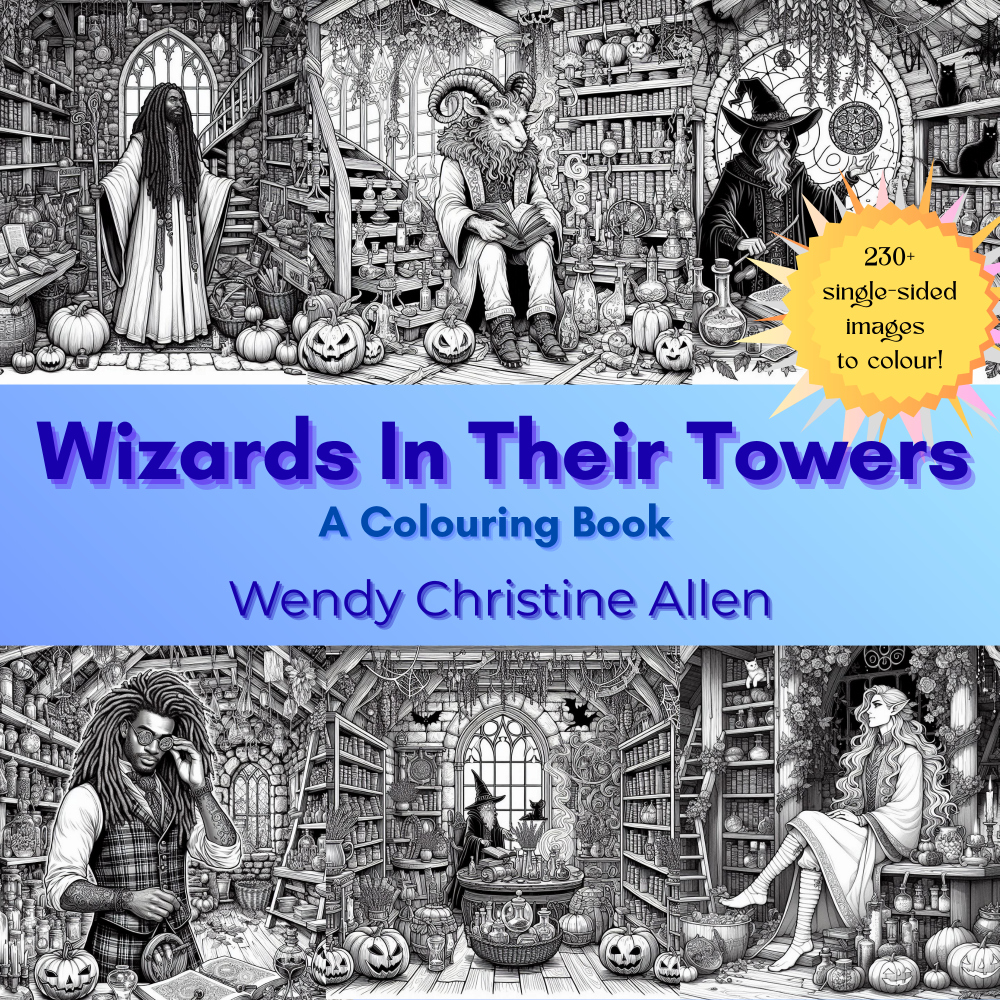
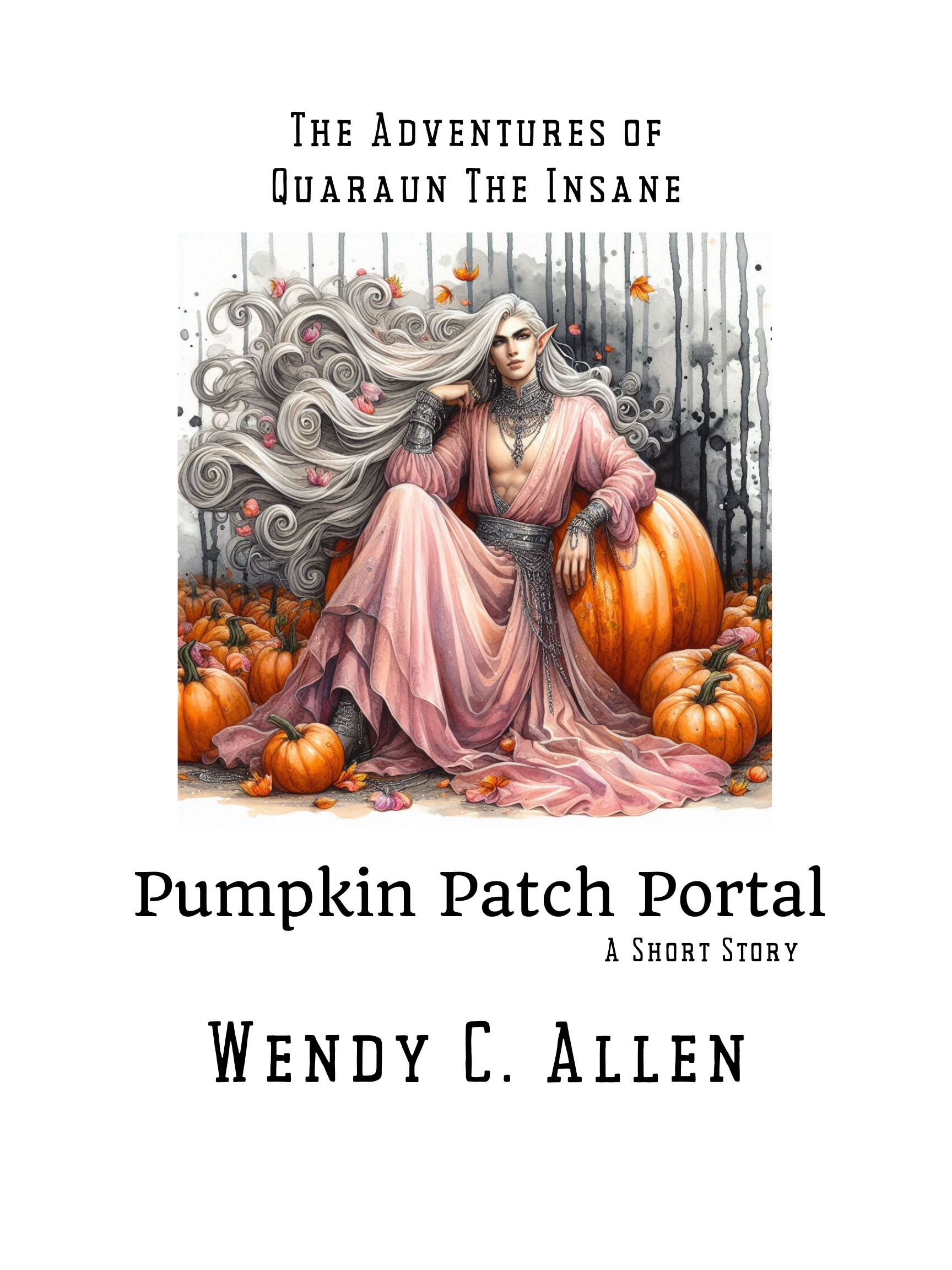
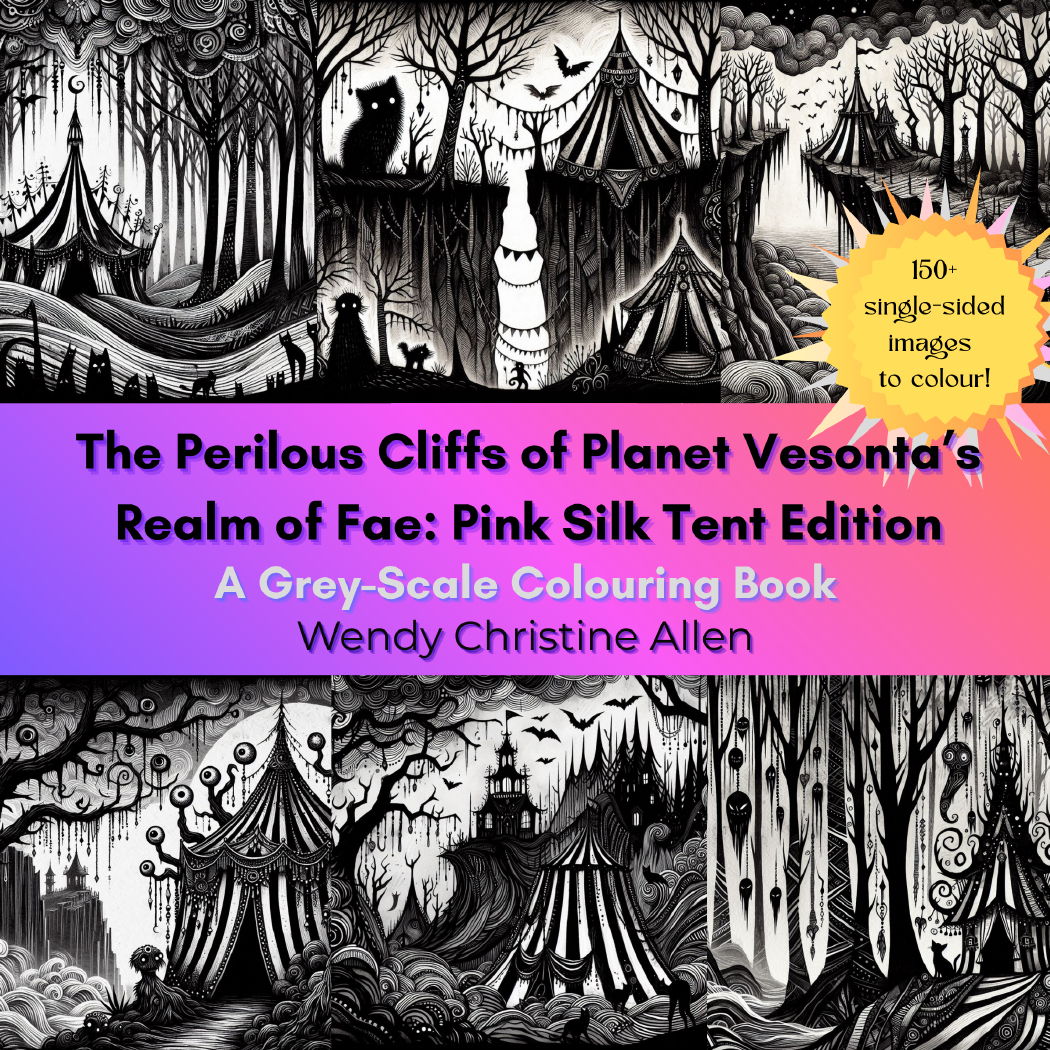





![How is sexuality portrayed in your world? | Worldbuilding For Fantasy Novels | Creating Cultures [SFW]](/image-thumbnails/BoomFuzzyBeingARaptorWQuaraun4screenshot.png/default.webp)



















